- Weekly "in the news" features, pulilng together ideas around a topic.
The Greening of Environmental Ed
Key Term: Environmental Education
Story Type: In the News
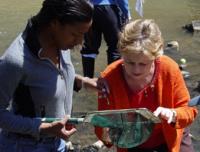
Teachers focus on complexity, evidence, and letting students draw their own conclusions.
The Greening of Environmental Ed
Key Term: Environmental Education
Story Type: In the News

Teachers focus on complexity, evidence, and letting students draw their own conclusions.
Sculpture designed to provoke thought about water
Age Level: K-2
Key Term: Environmental Issues, Legislation, Water Conservation, Floods and Drought, Geography
Story Type: In the News
Topic: Water, Geography

The newly developed CityCenter community in Las Vegas, Nev. recently added a piece of environmental art to its fine art collection. The 87-foot long, 3,700 pound sculpture hangs horizontally from steel cables above a registration desk. The sculpture depicts the Colorado River, complete with its meanders and swells at Lake Powell and Lake Mead. The sculpture was also made with environmentally conscious materials, being cast in reclaimed silver. It is aptly named "Silver River."
The sculpture’s artist, Maya Lin, reflects on her work by saying "Water is going to become more and more of a debate. I’m asking people to take a look at the natural world around them." Las Vegas’ major source of water is the Colorado River and with increasing droughts and demands for water, there is substantial concern that there will not be enough water to sustain the city in coming years.
This infusion of art and environmental consciousness is one of Lin’s trademarks. Growing up in Athens, Ohio during the 1970s, she was exposed to environmental issues at an early age. In 1969, the Cuyahoga River, located in Ohio, caught on fire as a result of its heavily polluted waters. This initiated a massive public response, making Ohio the focal point of national environmental awareness and legislation that would follow. In addition to her artistic pursuits, Lin also sits on the board of the Natural Resources Defense Council.
Her other environmental projects include "Storm King Wavefield," an environmental reclamation project at the site of a former gravel pit in Mountainville, N.Y. For this project she created waves in a field by forming earth and grass mounds. Her more recent work, "What is Missing," is a multisite international project that focuses on habitats and species that are extinct or disappearing and provides information on ways to help protect the environment. The main element of the project is a giant megaphone that plays the sounds of endangered species.
Related Resources:
Using the Landscape to Create Works of Art (Visual Arts, The Arts)
Fractals in Nature and Art (Visual Arts, The Arts, Geometry, Algebra I, Mathematics)
Representations of the Natural World in Art (Visual Arts, The Arts, Social Studies, Language Arts)
Photo: Sam Morris, Las Vegas Sun
"Freak" Hurricane Ike Will Cost $22 Billion

Hurricane Ike will be entered into the record books for the severe damage it inflicted in and around Galveston, Texas, experts say.
"This one's going to be famous for a long time, if for no other reason than it hit Texas, which hadn't gotten a strike by a damaging hurricane in 25 years," said Jeff Masters, director of Weather Underground, a private commercial forecasting service.
Curricula Links:
Weather Channel Video on Hurricanes (Earth Science)
Historical Data on Number of Hurricanes by Year (History, Mathematics)
Economics During a Hurricane (Economics, U.S. Government)
Eco-Friendly Billboard Debuts in Times Square
Key Term: Renewable Energy
Story Type: In the News
Topic: Energy
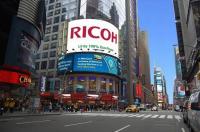
Around the holidays, there are many traditional sites to see in New York City, but this year, there will be a new attraction. A billboard lit completely by renewable energy will officially go on display in New York City’s Times Square on December 4th. Ricoh ® is launching the billboard to show that “…there are ways of being environmentally friendly to the planet, even on a billboard.” The structure, which will be equipped with 16 wind turbines and 64 solar panels is expected to save $12,000 to $15,000 in electricity costs every month, and would prevent 18 tons of carbon emissions from being generated in a traditional coal power plant. There will be no back up generator for this billboard, and company owners are prepared for it to “go dark” if it has insufficient power.
Curricula Links:
Calculate Your Ecological Footprint (Environmental Science)
The Great Energy Debate (Geography, Language Arts, Mathematics)
World War II Posters with Environmental Messages (American History, Economics, The Arts)
Another beaver makes Bronx River home- doubles the total beaver population
Age Level: K-2
Key Term: Wildlife, New York City, Pelts, Habitat Restoration
Story Type: In the News
Topic: Water, Geography
Hot dam! The first beaver found in the city in 200 years finally has company after three years of solitude on the Bronx River.
A beaver named Jose is now sharing his life with another buck-toothed mammal - but the relationship is unclear.
"A companion, a friend, a mate, an associate - we don't know what it is," said Rep. Jose Serrano, for whom the first beaver was named after its discovery in 2007.
Empire States Building Goes Green, one building at a time
Key Term: Windows, Green Buildings, Efficiency
Story Type: In the News
Topic: Climate & Weather, Energy, Waste Management/Recycling
You want to ask him: How many do you break?
That's because Anthony Concepcion does windows- lots of windows.
He's working at the Empire State Building. As part of an effort to become certifiably green, the office tower is removing, retrofitting and replacing each of its 6,514 double-hung, dual-pane windows. That's 26,056 panes of glass.
Solar energy making a return to White House
Age Level: K-2
Key Term: Renewable Energy, Solar energy, President
Story Type: In the News
Topic: Climate & Weather, Energy, STEM, Gardening
The White House is going solar after all - a home improvement that carries modest energy benefits but much larger symbolic importance.
It isn't the first time the White House has used solar energy. President Jimmy Carter put 32 solar panels on the roof in the late 1970s, but President Ronald Reagan removed them in 1986. Two grass-roots campaigns have recently been lobbying President Obama to restore them as a sign of his commitment to renewable energy.
The Greening of Environmental Ed
Key Term: Environmental Education
Story Type: In the News

Teachers focus on complexity, evidence, and letting students draw their own conclusions.
Working at the park, teacher rangers share knowledge at Hoover site
Age Level: K-2
Key Term: National Parks
Story Type: In the News
Topic: Geography, Service-Learning
WEST BRANCH -- Dan Stevenson stood in the back of the cottage where Iowa native and future President Herbert Hoover was born in August 1874.
He explained to visitors how Hoover's father, Jesse Hoover, built the two-room cottage in 1871 for him, his wife, Hulda, and their oldest child, Theodore.
It is a job that Stevenson, an eighth-grade American history teacher at West Liberty Middle School, said appealed to his love of history.
Risk Taking Rises as Oil Rigs in Gulf Drill Deeper
Key Term: Gulf of Mexico, Deep sea drilling, Petroluem
Story Type: In the News
Topic: Water, Energy, Geography, Environmental Health, Project-Based Learning, Gardening
In a remote reach of the Gulf of Mexico, nearly 200 miles from shore, a floating oil platform thrusts its tentacles deep into the ocean like a giant steel octopus.
The $3 billion rig, called Perdido, can pump oil from dozens of wells nearly two miles under the sea while simultaneously drilling new ones. It is part of a wave of ultra-deep platforms — all far more sophisticated than the rig that was used to drill the ill-fated BP well that blew up in April. These platforms have sprung up far from shore and have pushed the frontiers of technology in the gulf, a region that now accounts for a quarter of the nation’s oil output.
Top 10 Green Reads of the Last 10 Years
Story Type: In the News
Topic: Climate & Weather, Biodiversity/Wildlife, Water, Energy, Geography, Environmental Health, Service-Learning, STEM, Project-Based Learning, Gardening, Waste Management/Recycling
The publication of Silent Spring in 1962 is widely considered to be the birth of the modern environmental movement. Since those early roots took hold, a series of seminal books have contributed to its growth and branched the discourse.
For 50 years, environmental writing has played an important role in defining and redefining the most pressing problems of the day—as well as offering solutions.
The last 10 years, of course, have been no different. In fact, during the past decade science and environmental writers produced a number of works that have become instant classics.
Photo Credit: Bill McKibben
Certainly, no environmental reading list would be complete without these top 10 green reads of the last 10 years:
10. Cradle 2 Cradle
Architect William McDonough and chemist Michael Braungart's book, Cradle to Cradle, is a manifesto in ecologically intelligent design.
Published in 2002, the book proposes replacing the antiquated design processes of the Industrial Revolution with one that's in harmony with nature.
Photo Credit: William McDonough and Michael Braungart
Check out the rest of the top 10 here.
Mapping Traffic's Toll on Wildlife
Age Level: K-2
Key Term: Wildlife, Roadkill
Story Type: In the News
Topic: Oceans, Geography, STEM, Gardening
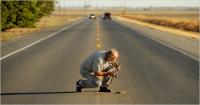
DAVIS, Calif. — To Ron Ringen, a retired veterinarian, roadkill is a calling. Nearly every week for the last seven months, Mr. Ringen, 69, has driven the roads north of this college town near Sacramento, scanning the pavement for telltale bits of fur and feathers.
Pulling over, Mr. Ringen gets out, snaps photographs and uses his GPS device to record the precise location where creatures met their end. He has logged more than 1,400 animals, from the miniature (one-ounce song sparrows) to the gargantuan (a 1,500-pound black Angus bull).
Oil Spill Cleanup Workers Include Many Very, Very Small Ones
Key Term: Oil Spill, Bacteria
Story Type: In the News
Topic: Water, Energy, Project-Based Learning
Among the hidden stars of the gulf cleanup is an oil-hungry bacterium that Dr. Seuss could have named — Alcanivorax. It and fellow microbes are breaking down a significant amount of the oil that gushed into the environment from BP’s runaway well, scientists say. The microbial feasting is known as biodegradation.
Old Oil Rig Turned Into Scuba Divers' Dream Hotel
Key Term: Sustainable design, Reuse
Story Type: In the News
Topic: Water, Geography, Waste Management/Recycling
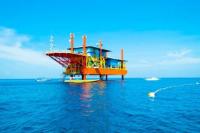
This time, it's for real: The type of project proposed by Morris Architects for the (pre-BP spill) Gulf of Mexico has actually been carried out in a remote part of the Pacific Ocean, where an old oil-drilling rig has been turned into a hotel catering to snorkelers and scuba divers.
The Seaventures Dive Resort, located in the Celebes Sea, surrounded by Borneo, Indonesia, and the Philippines, is hardly the swank scene envisioned in the architects' rendering, according to the Wall Street Journal's report on the hotel.
Penguins in peril find refuge in New Zealand
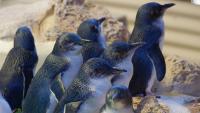
Tiny penguins face threats from dwindling fish supplies and habitat destruction by humans.
10 Hottest Species
Age Level: K-2
Key Term: Endangered Species
Story Type: In the News
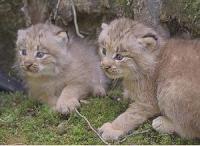
"America’s Hottest Species," a report produced by the Endangered Species Coalition, provides information on 10 of the top endangered wildlife, fish and plants experiencing the impacts of climate change.
The list includes species or groups of related species that are listed as threatened or endangered under the Federal Endangered Species Act or are candidates for listing.
Climate change threatens these species through habitat reduction, increases in disease and lowering of reproduction.
The species making the list were:
1. Kauai Creeper or ‘Akikiki
2. Elkhorn Coral
3. Bull Trout
4. Canada Lynx
5. Pacific Salmon
6. Leatherback Sea Turtle
7. Grizzly Bear
8. Bog Turtle
9. Western Prairie Fringed Orchid
10. Flatwoods Salamander
In addition, the Endangered Species Coalition conducted an online poll earlier this year to determine which species their audience thought was most threatened. The winner: polar bear.
Read the full news article or view the report
China launches armada to head off algae plume
Age Level: K-2
Story Type: In the News
Topic: Climate & Weather, Biodiversity/Wildlife, Water, Project-Based Learning
Fertilizer run-off and record high temperatures are causing unprecedented outbreaks of algae- known as the green tide- off the coast of Qingdao, China. Clean up crews are now scrubbing an area of about 150 mi sq.
Whooping cranes to be reintroduced in Louisiana

Ten whooping cranes, the most endangered species of crane in the world, will be reintroduced in a Louisiana conservation area more than 60 years after the birds' numbers dwindled to near zero, the U.S. Interior Department said on Tuesday.
Photo Credit: USFWS
Hawaiian Commercial and Sugar Gets $10 Million to Develop Biofuels for Navy
Age Level: K-2
Key Term: Biofuel, Sugar
Story Type: In the News
Topic: Climate & Weather, Biodiversity/Wildlife, Energy
HONOLULU — The federal government has turned to a 130-year-old Hawaii sugar grower for help in powering the Navy and weaning the nation off a heavy reliance on fossil fuels.
It will spend at least $10 million over the next five years to fund research and development at Maui cane fields for crops capable of fueling Navy fighter jets and ships.
Students aim to save endangered alligator snapping turtle
Age Level: 9-12
Story Type: In the News
Topic: Biodiversity/Wildlife
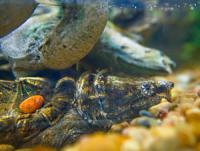
Peoria, Ill. — Are high school students the missing link toward ensuring the alligator snapping turtle doesn’t go the way of the dodo bird and the passenger pigeon?
Is that even a real question?
The answer to each is a resounding yes, at least to Paul Ritter, a sublimely enthusiastic environmental science teacher at Pontiac Township High School. Ritter is embarking on a campaign to "bring (the) species back from the brink of extinction.”
Ritter hopes to get some turtles to raise in his classroom in Pontiac. Then he hopes other science classes will sign on in the future. “It’s both an academic pursuit and the pursuit of saving the species,” Ritter said. “You couldn’t have one without the other. What an opportunity for the students.”
Pontiac senior Amanda Muir agreed with her teacher.
“I don’t know much about turtles,” said Muir, “but I plan to learn. Being involved in a project like this where the goal is to actually save a species is pretty exciting.”
Read the full story at the Peoria Journal Star.
Photo credit: Fred Zwicky/Journal Star
The Greening of Environmental Ed
Key Term: Environmental Education
Story Type: In the News

Teachers focus on complexity, evidence, and letting students draw their own conclusions.
Monarch butterfly count bounces back from bad year
Story Type: In the News
Topic: Climate & Weather, Biodiversity/Wildlife, Geography, Environmental Health

Monarch butterfly colonies in Mexico more than doubled in size this winter after bad storms devastated their numbers a year ago, conservationists said on Monday although the migrating insect remains under threat.
Millions of butterflies make a 2,000-mile journey each year from Canada to winter in central Mexico's warmer weather but the size of that migration can vary wildly.
Fewer of the orange and black insects arrived in Mexico last year than ever before, researchers said, but the butterfly colonies increased by 109 percent this year to cover roughly 10 acres of forest. Researchers estimate the size of the butterfly colonies based on the area they occupy in a forest.
Photo Credit: monarch-butterfly.info
Giant Lizard Is A New Species, Scientists Say
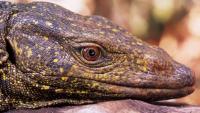
Researchers have concluded that a giant, golden-spotted monitor lizard discovered in the forested mountains of the Philippines six years ago is a new species, according to a study released Wednesday.
The 6.5-foot-long lizard was first spotted in 2004 in the Sierra Madre mountains on the main island of Luzon when local researchers saw local Agta tribesmen carrying one of the dead reptiles.
But it took until last year to determine it was a new species. After capturing an adult, researchers from the University of Kansas and the National Museum of the Philippines obtained DNA samples that helped confirm the lizard was new to science.
Read full article
Mexican salamander helps uncover mysteries of stem cells and evolution
Age Level: K-2
Key Term: Stem cells, Health
Story Type: In the News
Topic: Water, Environmental Health
Dr Andrew Johnson is speaking today (12 July) at the UK National Stem Cell Network annual conference. He and his team from the University of Nottingham have been using a Mexican aquatic salamander called an axolotl to study the evolution and genetics of stem cells – research that supports the development of regenerative medicine to treat the consequences of disease and injury using stem cell therapies.
School kids help with turtle research project in Forest Park
Age Level: K-2, 3-5, 6-8, 9-12
Story Type: In the News
Topic: Biodiversity/Wildlife
St. Louis, Mo. — Turtles can teach us a lot about our environment, say researchers at the St. Louis Zoo who are tracking the reptiles who live inside Forest Park.
Ten turtles in Forest Park that have been fitted with tracking devices will be studied for their movements and health status. Another 10 turtles at Washington University's Tyson Research Center in rural St. Louis County will also be monitored as a comparison.
Fifth- and sixth-grade students from the eco club at South City Prepatory Academy were on hand Wednesday to help researchers track down the turtles in Forest Park. The students used tracking devices as they marched through the woods and then watched as scientists measured and weighed the turtles.
The students were participating in the zoo's outreach efforts to introduce city kids to nature and animal habitats.
Photo credit: Laurie Skrivan
Read the story at STLtoday.com.
Dim Prospects for Many Land Mammals

The International Union for Conservation of Nature (IUCN) reports that nearly 25 percent of all land mammals are threatened with extinction and the outlook is dim for other animals as well. Some species alive today are only found in captivity, and many others are critically endangered, with slim chances of ever recovering.
Curricula Links:
See You Later, Alligator (World History, Geography, Language Arts)
Who's Afraid of the Reintroduced Wolf (Language Arts, Science)
Endangered Species Act Fact Sheet (Science, U.S. Government)
Visit Other News Articles in the News Archive
Molecular Data and Images from Space Used to Study Imperiled Coastal Dolphins
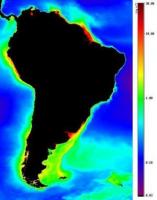
Using DNA samples and images from Earth-orbiting satellites, conservationists from Columbia University, the Wildlife Conservation Society, the American Museum of Natural History, and Fundación AquaMarina, are gathering new insights about the franciscana -- a poorly known coastal dolphin species of eastern South America -- in an effort to understand populations and conserve them.
The study, one of the first to combine molecular data along with range-wide environmental information for a marine species, is helping researchers to understand how seemingly monotonous marine environments actually contain significant habitat differences that are shaping populations of this threatened species, which averages between 5-6 feet in length and around 80-90 pounds in weight. According to findings published in the most recent edition of Molecular Ecology, genetic differences between dolphins from different sites correlate to measurable differences in water temperature, turbidity and chlorophyll levels, a tantalizing indication of how largely hidden oceanographic variables could drive population structure of marine animals.
The Mystery of Mangroves
Age Level: K-2
Key Term: Floods, Hurricanes
Story Type: In the News
Topic: Climate & Weather, Water, Geography
There are more than 70 species of mangrove trees and shrubs. The best known, such as the red mangrove, are highly adapted to an amphibious lifestyle: Their roots shield them from salt intrusion, and their waxy leaves prevent the loss of precious freshwater.
Despite all this, mangroves are one of the most endangered ecosystems on the planet; they are cleared to make way for rice paddies and shrimp ponds in some areas and for condominiums and subdivisions in others. All told, humans have destroyed 20 percent of their global extent since 1980.
Grizzly bear enjoy the good life as they move closer to human settlement
Age Level: K-2
Key Term: Threatened Species, Grizzly Bear, Montana, Wyoming, Yellowstone, Wildlife Encounter, Pine Beetle
Story Type: In the News
Topic: Geography
Magnificent and wild, the grizzly bear of the American west has a fearsome reputation. But as a population boom forces them from their deep wilderness habitat of the Rocky Mountains, their increasingly close encounters with humans are altering their lifestyles, making them lazy and fat, conservation experts say.
"We've got bears spending the whole summer eating oats in the field, out there with the elk and the deer, and getting fatter and fatter," said Jamie Jonkel, a grizzly manager and wildlife conflict specialist with Montana Fish, Wildlife, and Parks, the state government's conservation agency.
"They've started really loving the good life, much like the average American," said Jonkel, who led a tour of reporters from the Society for Envornmental Journalists.
"Some of them still move into the high country in the summer, but some of them just set up shop and don't move. You can see grizzlies out there in the fields all day lazing about grazing on alfafa while a kid is kicking a soccer ball around," he said.
A recent census by scientific agencies put the grizzly population in Yellowstone national park and surrounding areas of Wyoming, Montana and Idaho at 603.
That is more than three times the population in 1975 when hunting was outlawed, and grizzlies were protected as an endangered species. Wildlife experts suspect it could be even higher.
The population rise has put pressure on the grizzlies' food source in high wilderness areas. So too has a beetle infestation which has killed off huge swaths of pine across the Rockies, and with them the pine nuts that the grizzlies rely on in late summer and autumn.
Outdoors and Out of Reach, Studying the Brain
Key Term: Attention, Pyschology
Story Type: In the News
Topic: Environmental Health
GLEN CANYON NATIONAL RECREATION AREA, Utah — Todd Braver emerges from a tent nestled against the canyon wall. He has a slight tan, except for a slim pale band around his wrist. For the first time in three days in the wilderness, Mr. Braver is not wearing his watch. “I forgot,” he says.
It is a small thing, the kind of change many vacationers notice in themselves as they unwind and lose track of time. But for Mr. Braver and his companions, these moments lead to a question: What is happening to our brains?
Six Rules for Eco-friendly Gardening
Story Type: In the News
Topic: Climate & Weather, Water, Energy, Geography, Environmental Health, Green Schools, STEM
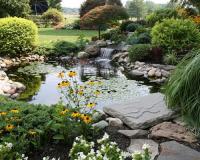
Think about the millions of tons of waste materials that are hauled away, buried or burned each day from landscaping and groundskeeping operations. This includes trees, shrubs, brush, lumber, asphalt and concrete, just to name a few.
Also, consider the millions of gallons of water, pesticides, fertilizers and fuels used to keep gardens, yards and landscapes healthy, lush and green. The costs of these materials — both economic and environmental — can easily be reduced or eliminated with updated landscaping methods.
Click here to view some green landscaping elements you can use in your daily gardening routine and do your part for the planet.
Photo Credit: Mother Nature Network
First wild polar-grizzly bear hybrid offspring discovered
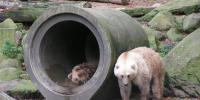
It's official: polar bears and grizzlies are interbreeding in the wild - and so are their offspring, according to DNA tests cited by TheStar.com. The offspring of a female polar-grizzly bear was discovered this month in Canada, proving that there are more of these hybrid animals in existence than the previously confirmed 17 located in zoos.
Another beaver makes Bronx River home- doubles the total beaver population
Age Level: K-2
Key Term: Wildlife, New York City, Pelts, Habitat Restoration
Story Type: In the News
Topic: Water, Geography
Hot dam! The first beaver found in the city in 200 years finally has company after three years of solitude on the Bronx River.
A beaver named Jose is now sharing his life with another buck-toothed mammal - but the relationship is unclear.
"A companion, a friend, a mate, an associate - we don't know what it is," said Rep. Jose Serrano, for whom the first beaver was named after its discovery in 2007.
Gulf Oil Plume is not Breaking Down Fast, Study Says
Age Level: K-2
Key Term: Oil Spill, Gulf of Mexico
Story Type: In the News
Topic: Water, Energy, Environmental Health, Project-Based Learning
New research confirms the existence of a huge plume of dispersed oil deep in the Gulf of Mexico and suggests that it has not broken down rapidly, raising the possibility that it might pose a threat to wildlife for months or even years.
The study, the most ambitious scientific paper to emerge so far from the Deepwater Horizon spill, casts some doubt on recent statements by the federal government that oil in the gulf appears to be dissipating at a brisk clip. However, the lead scientist in the research, Richard Camilli, cautioned that the samples were taken in June and circumstances could have changed in the last two months.
World Oceans Day clouded by oil spill
Age Level: K-2
Story Type: In the News
Topic: Biodiversity/Wildlife, Environmental Health
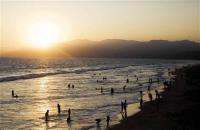
Conservation groups, schools, businesses and governments across the globe are planning events and activities Tuesday to celebrate the world’s oceans, a day of tribute tinged by worry over the impact of a devastating oil spill in the Gulf of Mexico.
The United Nations recognizes June 8 as World Oceans Day. The “holiday” was officially celebrated for the first time last year, though the concept of a day to pay homage to the world’s oceans was first proposed in 1992 by Canada at the Earth Summit in Rio de Janeiro.
Cholera Sweeps Through Zimbabwe
Story Type: In the News
Topic: Water, Environmental Health, Project-Based Learning
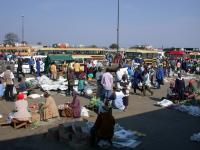
Due to inferior sanitary conditions and poor health care, Zimbabwe is currently facing one of the greatest health crises of the 21st century. Cholera has been spreading throughout the country since August. Citizens have little access to clean water or proper health care, making it even harder to stop the spread of disease. Cholera is a bacterial infection of the gastrointestinal tract and spreads through direct contact with contaminated water reservoirs. The disease is generally not found in first-world countries, where water treatment and sanitation plants clean public water; however, water-borne diseases like cholera are still prevalent in many developing nations where these technologies do not exist. Although cholera is fairly easy to treat with antibiotics and rehydration therapy, many third-world nations do not have the proper medicines or healthcare to treat outbreaks, thus leaving much of the population unprotected. As of December 15, 2008, 16,700 individuals have contracted cholera, and over 792 individuals have died as a result of the disease.
Curricula Links:
Ecological Challenges in Africa (Geography, Environmental Health, Language Arts)
Invisible Invaders (World History, Geography, Environmental Health)
Cholera: Tracking the First Truly Global Disease (World History, Environmental Health, Urban Planning)
Photo Credit: Trymore MacVivo
Roman Decadence and Rising Seas
Age Level: K-2
Key Term: Roman Empire, Italy, Feasts, Fish Tank
Story Type: In the News
Topic: Climate & Weather, Water, Energy, Geography
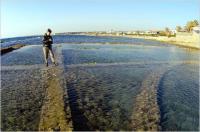
Sea level is rising in relation to many of the world’s shorelines, and has been for decades. The main reason is that the volume of the ocean is increasing as a result of the melting of land ice and the warming of the sea itself. (Warm water expands, just as warm air does.)
Scientists once thought this volume increase had been going on, in fits and starts, for thousands of years. This widespread belief was often used as a debating point by climate-change skeptics, who argued that sea-level rise was nothing to worry about because it had existed throughout the history of human civilization.
But research in recent years has turned that notion on its head. The matter is not entirely settled, but some persuasive evidence points to the conclusion that the volume of the ocean was fairly stable for the last 2,000 years and began rising only recently, more or less in sync with industrialization. This is important because it suggests that sea level might be pretty sensitive to the greenhouse gases that humans are dumping into the atmosphere.
I made a brief mention of this issue in a long article on Sunday on sea-level rise but did not have the space to go into much detail. Here is some of the background:
Archaeological discoveries that shed light on ancient sea level are prized finds for the experts in this field. One of the most compelling studies of recent years was carried out by an Australian scientist named Kurt Lambeck, who worked with colleagues in Italy. They focused on ancient fish tanks built at the edge of the Mediterranean by the Romans over the 300 years when their civilization was at its height, ending in the second century A.D.
These tanks were sometimes decorative, but mostly they were used as storage pens to keep fish fresh for the lavish banquets that wealthy Romans held in their seaside villas. The tanks, described in some detail by Roman historians, have long fired the imaginations of classicists, since they represent Roman civilization at its decadent height. The tanks made an appearance in the popular Robert Harris novel Pompeii, for instance.
The Coral Pulse of Life
Story Type: In the News
Topic: Climate & Weather, Water, Geography, STEM, Project-Based Learning
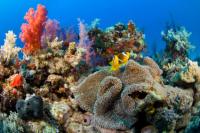
Corals are marine organisms living in compact colonies of many identical individual polyps. The group includes the important reef builders that inhabit tropical oceans, which secrete calcium carbonate to form a hard skeleton. Coral reefs form some of the most diverse ecosystems on Earth.
They occupy less than one tenth of one percent of the world ocean surface, yet they provide a home for about twenty-five percent of all marine species, including fish, molluscs, worms, and crustaceans. Paradoxically, coral reefs flourish even though they are often surrounded by ocean waters that provide few nutrients. University of Miami (UM) Rosenstiel School of Marine & Atmospheric Science scientist Chris Langdon and colleagues have developed a new tool to monitor coral reef vital signs. By accurately measuring their biological pulse, scientists can better assess how climate change and other ecological threats impact coral reef health worldwide.
Read the rest of the article here.
Photo Credit: Coral Reef Info
Bush protects unique areas across the Pacific
Age Level: K-2
Key Term: Ecology, Habitats, Oceanography, Endangered Species
Story Type: In the News
Topic: Water
On Tuesday, January 8, the former President Bush in his last days in office made an announcement to protect three major marine areas in the Pacific Ocean that has been acclaimed as “one of the most important moves in marine conservation in recent decades." Among the protected marine monuments is the largest live coral cover in the world and Mariana’s Trench, Earth’s deepest underwater canyon. In total, 195,000 square miles are protected in Tuesday’s announcement. The status as a monument protects this area from overfishing, oil drilling, and other environmentally hazardous or detrimental human activity. These areas, previously owned by the Nature Conservancy, will primarily be used for scientific research and exploration of marine ecosystems.
Curricula Links:
A multi-faceted Approach to Biodiversity (Economics, American Government, Biology)
Finding Solutions to the Overfishing Problem (Environmental Science, Biology)
Oceanographic Specialties (Earth Science, Chemistry, Physics)
Photo Credit: Christine Huffard
Canada's Lost Salmon Return in Droves
Age Level: K-2
Key Term: Spawning, Salmon
Story Type: In the News
Topic: Water, Geography, Project-Based Learning
Every year, sockeye salmon return to the rivers of western Canada to make their arduous upstream journey to calmer spawning grounds. It is a seasonal touchstone that signifies the approaching end of summer, one that has been observed for centuries.
The only problem is that some years, like in 2009, the salmon don't return.
Snakes may be in decline worldwide
Age Level: K-2
Key Term: snakes;biodiversity
Story Type: In the News

A sharp decline in snake numbers would likely have serious consequences for many ecosystems.
Forests Expand in Europe, North America and Central Asia
Age Level: K-2
Story Type: In the News
Topic: Climate & Weather, Biodiversity/Wildlife, Water, Oceans, Energy, Geography, STEM, Project-Based Learning
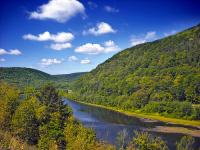
Forests in Europe, North America, the Caucasus, and Central Asia have expanded steadily over the last two decades, increasing by more than 25 million hectares — an area slightly larger than the United Kingdom — since 1990, a UN report says. In Europe alone, forested areas increased by 17 million hectares from 1990 to 2010, with the volume of forests growing by more than 430 million cubic meters annually, according to the Global Forest Resource Assessment 2010.
Read the rest of the article here.
Photo Credits: Nicholas T/flickr/Creative Commons
Japanese Village Creates Art From Hues of Rice
Age Level: K-2
Key Term: Genetic Engineering, Riuce, Japan
Story Type: In the News
Topic: Biodiversity/Wildlife
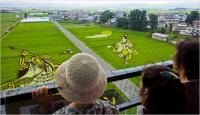
INAKADATE, Japan — Nearly two decades ago, Koichi Hanada, a clerk in the village hall, received an unusual request from his superior: find a way to bring tourists to this small community in rural northern Japan, which has rice paddies and apple orchards, but not much else.
Mr. Hanada, a taciturn but conscientious man, said he had spent months racking his brain. Then, one day he saw schoolchildren planting a rice paddy as a class project. They used two varieties of rice plants, one with dark purplish stalks and the other bright green ones. Then it struck him, why not plant the colored varieties in such a way as to form words and pictures?
Bridges Built to Help Borneo Orangutan Meet Mates
Age Level: K-2
Key Term: Endangered Species, Extinction, Orangutan, Indonesia, Primate, Ape, Palm Oil
Story Type: In the News
Topic: Biodiversity/Wildlife, Geography
KUALA LUMPUR, Malaysia – Endangered orangutans on Borneo island are using fire hoses slung across rivers by humans to help them move around isolated forests to potentially meet new mates and boost the species' chances for survival, an environmental group said Monday.
Malaysian authorities are building more of the makeshift bridges after some orangutans were spotted using them over the past year, said Marc Ancrenaz, co-founder of French-based conservation group Hutan, which is working with Malaysian state wildlife department officials on orangutan protection.
Conservationists estimate about 11,000 orangutans live in Malaysia's Sabah state in Borneo, but many are isolated from each other because swaths of forest have been cut for development, logging and oil palm plantations.
Environmental groups and wildlife authorities have been hooking up old fire hoses strung together between trees on different sides of rivers to help orangutans — which cannot swim — swing or walk across them. The first bridge was set up seven years ago, but it was only last year that an orangutan was captured on camera using one of them.
Witnesses have seen others doing so since then, prompting officials to build more bridges.
"It takes a while for the animals to get used to it. ... If we are not able to reconnect them, they will go extinct very soon," Ancrenaz said.
Colossal Sea Creature Photos
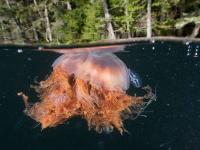
The world’s largest creatures reside in the ocean, and its depths are home to unusual species whose surprising proportions are unknown on land.
Here, an underwater view captures the billowing tentacles of a lion’s mane jellyfish. The most potent species of jellyfish, the lion’s mane can reach a diameter of 6.6 feet (2 meters) with tentacles topping 49 feet (15 meters).
Oceans choking on CO2, study says
Age Level: K-2
Story Type: In the News
Topic: Climate & Weather, Water, Energy, Environmental Health, Project-Based Learning
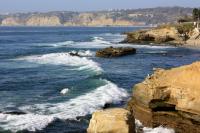
SYDNEY - The world's oceans are virtually choking on rising greenhouse gases, destroying marine ecosystems and breaking down the food chain -- irreversible changes that have not occurred for several million years, a new study says.
The changes could have dire consequences for hundreds of millions of people around the globe who rely on oceans for their livelihoods.
"It's as if the Earth has been smoking two packs of cigarettes a day", said the report's lead-author Australian marine scientist Professor Ove Hoegh-Guldberg.
Oceans choking on CO2, study says
Age Level: K-2
Story Type: In the News
Topic: Climate & Weather, Water, Energy, Environmental Health, Project-Based Learning

SYDNEY - The world's oceans are virtually choking on rising greenhouse gases, destroying marine ecosystems and breaking down the food chain -- irreversible changes that have not occurred for several million years, a new study says.
The changes could have dire consequences for hundreds of millions of people around the globe who rely on oceans for their livelihoods.
"It's as if the Earth has been smoking two packs of cigarettes a day", said the report's lead-author Australian marine scientist Professor Ove Hoegh-Guldberg.
Top 10 Green Reads of the Last 10 Years
Story Type: In the News
Topic: Climate & Weather, Biodiversity/Wildlife, Water, Energy, Geography, Environmental Health, Service-Learning, STEM, Project-Based Learning, Gardening, Waste Management/Recycling
The publication of Silent Spring in 1962 is widely considered to be the birth of the modern environmental movement. Since those early roots took hold, a series of seminal books have contributed to its growth and branched the discourse.
For 50 years, environmental writing has played an important role in defining and redefining the most pressing problems of the day—as well as offering solutions.
The last 10 years, of course, have been no different. In fact, during the past decade science and environmental writers produced a number of works that have become instant classics.
Photo Credit: Bill McKibben
Certainly, no environmental reading list would be complete without these top 10 green reads of the last 10 years:
10. Cradle 2 Cradle
Architect William McDonough and chemist Michael Braungart's book, Cradle to Cradle, is a manifesto in ecologically intelligent design.
Published in 2002, the book proposes replacing the antiquated design processes of the Industrial Revolution with one that's in harmony with nature.
Photo Credit: William McDonough and Michael Braungart
Check out the rest of the top 10 here.
Dust levels in Earth's atmosphere contribute to climate change
Story Type: In the News
Topic: Climate & Weather, Energy, Environmental Health, STEM, Project-Based Learning
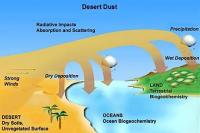
The amount of dust in the Earth's atmosphere has doubled over the last century, according to a new study; and the dramatic increase is influencing climate and ecology around the world.
The study, led by Natalie Mahowald, associate professor of earth and atmospheric sciences, used available data and computer modeling to estimate the amount of desert dust, or soil particles in the atmosphere, throughout the 20th century. It's the first study to trace the fluctuation of a natural (not human-caused) aerosol around the globe over the course of a century.
Photo Credit: Cornell University
Oil Spill Cleanup Workers Include Many Very, Very Small Ones
Key Term: Oil Spill, Bacteria
Story Type: In the News
Topic: Water, Energy, Project-Based Learning
Among the hidden stars of the gulf cleanup is an oil-hungry bacterium that Dr. Seuss could have named — Alcanivorax. It and fellow microbes are breaking down a significant amount of the oil that gushed into the environment from BP’s runaway well, scientists say. The microbial feasting is known as biodegradation.
China launches armada to head off algae plume
Age Level: K-2
Story Type: In the News
Topic: Climate & Weather, Biodiversity/Wildlife, Water, Project-Based Learning
Fertilizer run-off and record high temperatures are causing unprecedented outbreaks of algae- known as the green tide- off the coast of Qingdao, China. Clean up crews are now scrubbing an area of about 150 mi sq.
Hawaiian Commercial and Sugar Gets $10 Million to Develop Biofuels for Navy
Age Level: K-2
Key Term: Biofuel, Sugar
Story Type: In the News
Topic: Climate & Weather, Biodiversity/Wildlife, Energy
HONOLULU — The federal government has turned to a 130-year-old Hawaii sugar grower for help in powering the Navy and weaning the nation off a heavy reliance on fossil fuels.
It will spend at least $10 million over the next five years to fund research and development at Maui cane fields for crops capable of fueling Navy fighter jets and ships.
Six Rules for Eco-friendly Gardening
Story Type: In the News
Topic: Climate & Weather, Water, Energy, Geography, Environmental Health, Green Schools, STEM

Think about the millions of tons of waste materials that are hauled away, buried or burned each day from landscaping and groundskeeping operations. This includes trees, shrubs, brush, lumber, asphalt and concrete, just to name a few.
Also, consider the millions of gallons of water, pesticides, fertilizers and fuels used to keep gardens, yards and landscapes healthy, lush and green. The costs of these materials — both economic and environmental — can easily be reduced or eliminated with updated landscaping methods.
Click here to view some green landscaping elements you can use in your daily gardening routine and do your part for the planet.
Photo Credit: Mother Nature Network
The Greening of Environmental Ed
Key Term: Environmental Education
Story Type: In the News

Teachers focus on complexity, evidence, and letting students draw their own conclusions.
Gulf Oil Plume is not Breaking Down Fast, Study Says
Age Level: K-2
Key Term: Oil Spill, Gulf of Mexico
Story Type: In the News
Topic: Water, Energy, Environmental Health, Project-Based Learning
New research confirms the existence of a huge plume of dispersed oil deep in the Gulf of Mexico and suggests that it has not broken down rapidly, raising the possibility that it might pose a threat to wildlife for months or even years.
The study, the most ambitious scientific paper to emerge so far from the Deepwater Horizon spill, casts some doubt on recent statements by the federal government that oil in the gulf appears to be dissipating at a brisk clip. However, the lead scientist in the research, Richard Camilli, cautioned that the samples were taken in June and circumstances could have changed in the last two months.
The Coral Pulse of Life
Story Type: In the News
Topic: Climate & Weather, Water, Geography, STEM, Project-Based Learning

Corals are marine organisms living in compact colonies of many identical individual polyps. The group includes the important reef builders that inhabit tropical oceans, which secrete calcium carbonate to form a hard skeleton. Coral reefs form some of the most diverse ecosystems on Earth.
They occupy less than one tenth of one percent of the world ocean surface, yet they provide a home for about twenty-five percent of all marine species, including fish, molluscs, worms, and crustaceans. Paradoxically, coral reefs flourish even though they are often surrounded by ocean waters that provide few nutrients. University of Miami (UM) Rosenstiel School of Marine & Atmospheric Science scientist Chris Langdon and colleagues have developed a new tool to monitor coral reef vital signs. By accurately measuring their biological pulse, scientists can better assess how climate change and other ecological threats impact coral reef health worldwide.
Read the rest of the article here.
Photo Credit: Coral Reef Info
Risk Taking Rises as Oil Rigs in Gulf Drill Deeper
Key Term: Gulf of Mexico, Deep sea drilling, Petroluem
Story Type: In the News
Topic: Water, Energy, Geography, Environmental Health, Project-Based Learning, Gardening
In a remote reach of the Gulf of Mexico, nearly 200 miles from shore, a floating oil platform thrusts its tentacles deep into the ocean like a giant steel octopus.
The $3 billion rig, called Perdido, can pump oil from dozens of wells nearly two miles under the sea while simultaneously drilling new ones. It is part of a wave of ultra-deep platforms — all far more sophisticated than the rig that was used to drill the ill-fated BP well that blew up in April. These platforms have sprung up far from shore and have pushed the frontiers of technology in the gulf, a region that now accounts for a quarter of the nation’s oil output.
Forests Expand in Europe, North America and Central Asia
Age Level: K-2
Story Type: In the News
Topic: Climate & Weather, Biodiversity/Wildlife, Water, Oceans, Energy, Geography, STEM, Project-Based Learning

Forests in Europe, North America, the Caucasus, and Central Asia have expanded steadily over the last two decades, increasing by more than 25 million hectares — an area slightly larger than the United Kingdom — since 1990, a UN report says. In Europe alone, forested areas increased by 17 million hectares from 1990 to 2010, with the volume of forests growing by more than 430 million cubic meters annually, according to the Global Forest Resource Assessment 2010.
Read the rest of the article here.
Photo Credits: Nicholas T/flickr/Creative Commons
Top 10 Green Reads of the Last 10 Years
Story Type: In the News
Topic: Climate & Weather, Biodiversity/Wildlife, Water, Energy, Geography, Environmental Health, Service-Learning, STEM, Project-Based Learning, Gardening, Waste Management/Recycling
The publication of Silent Spring in 1962 is widely considered to be the birth of the modern environmental movement. Since those early roots took hold, a series of seminal books have contributed to its growth and branched the discourse.
For 50 years, environmental writing has played an important role in defining and redefining the most pressing problems of the day—as well as offering solutions.
The last 10 years, of course, have been no different. In fact, during the past decade science and environmental writers produced a number of works that have become instant classics.
Photo Credit: Bill McKibben
Certainly, no environmental reading list would be complete without these top 10 green reads of the last 10 years:
10. Cradle 2 Cradle
Architect William McDonough and chemist Michael Braungart's book, Cradle to Cradle, is a manifesto in ecologically intelligent design.
Published in 2002, the book proposes replacing the antiquated design processes of the Industrial Revolution with one that's in harmony with nature.
Photo Credit: William McDonough and Michael Braungart
Check out the rest of the top 10 here.
Are we in an age of great earthquakes?
Key Term: earth quakes
Story Type: In the News
Topic: Geography
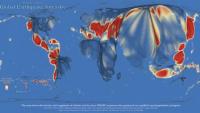
Dust levels in Earth's atmosphere contribute to climate change
Story Type: In the News
Topic: Climate & Weather, Energy, Environmental Health, STEM, Project-Based Learning

The amount of dust in the Earth's atmosphere has doubled over the last century, according to a new study; and the dramatic increase is influencing climate and ecology around the world.
The study, led by Natalie Mahowald, associate professor of earth and atmospheric sciences, used available data and computer modeling to estimate the amount of desert dust, or soil particles in the atmosphere, throughout the 20th century. It's the first study to trace the fluctuation of a natural (not human-caused) aerosol around the globe over the course of a century.
Photo Credit: Cornell University
"Freak" Hurricane Ike Will Cost $22 Billion

Hurricane Ike will be entered into the record books for the severe damage it inflicted in and around Galveston, Texas, experts say.
"This one's going to be famous for a long time, if for no other reason than it hit Texas, which hadn't gotten a strike by a damaging hurricane in 25 years," said Jeff Masters, director of Weather Underground, a private commercial forecasting service.
Curricula Links:
Weather Channel Video on Hurricanes (Earth Science)
Historical Data on Number of Hurricanes by Year (History, Mathematics)
Economics During a Hurricane (Economics, U.S. Government)
Old Oil Rig Turned Into Scuba Divers' Dream Hotel
Key Term: Sustainable design, Reuse
Story Type: In the News
Topic: Water, Geography, Waste Management/Recycling

This time, it's for real: The type of project proposed by Morris Architects for the (pre-BP spill) Gulf of Mexico has actually been carried out in a remote part of the Pacific Ocean, where an old oil-drilling rig has been turned into a hotel catering to snorkelers and scuba divers.
The Seaventures Dive Resort, located in the Celebes Sea, surrounded by Borneo, Indonesia, and the Philippines, is hardly the swank scene envisioned in the architects' rendering, according to the Wall Street Journal's report on the hotel.
Warmer Artic Spells Colder Winters
Age Level: K-2
Key Term: Artic, Sea Ice, Polar Regions, North Pole, Icebergs, Winter, Ice Melt
Story Type: In the News
Topic: Climate & Weather, Water, Geography
The Arctic is moving into "a new climate state" and a return to previous Arctic conditions is "unlikely," according to a new assesment from the National Oceanic and Atmospheric Administration. One consequence of a warmer Arctic could be colder winters in other parts of the Northern Hemisphere.
The basic facts have been reported widely and often:
The area covered by sea ice hovered near its historic low this summer. In Greenland, record-high temperatures this year have helped accelerate the melting of the country's massive ice sheet. Throughout the Arctic, permafrost is warming and the blanket of snow is shrinking. Those changes appear to be long-lasting, said an international team of climate experts who wrote the National Oceanic and Atmospheric Administration report. [...] "The Arctic is a system, and the system is changing," said Don Perovich, a sea ice expert with the U.S. Army Corps of Engineers who worked on the report. "It's not just that sea ice is being reduced. There's changes in Greenland, the atmosphere, the ecosystem, and these changes are affecting human activity."
What is increasingly apparent, as researchers have warned for years, is that "polar amplification" is causing many of these changes to feed on themselves, amplifying each other year after year. In this regard, what is happening to Arctic sea ice is in many ways key.
As the National Snow and Ice Data Center (NSIDC) pointed out earlier this month, Arctic sea ice is not just diminishing in extent -- the four lowest levels have been in the last four years -- but it is also younger and thinner. That makes ice easier to melt each year, which in turn exposes greater areas of heat-trapping ocean, which causes further melting, making it more and more difficult for sea ice to recover to previous levels.
Why Quakes Travel Farther On East Coast

A rare 5.8 earthquake that rattled the eastern United States on Tuesday was felt over a wide area from Toronto, Canada down to Georgia due to the hard, brittle quality of the ground, experts said.
The quake that struck mid-afternoon near Richmond, Virginia was the strongest in the state since 1897, and shook the eastern seaboard for some 30 seconds, sparking a wave of panic among residents.
"Earthquakes of this magnitude are unusual in your area, but the fact that you shook so hard and the event was actually some distance from you is not unusual," Thomas Jordan, director of Southern California Earthquake Center based at the University of Southern California, said.
The outer rocky shell of the Earth, known as the lithosphere, is colder on the East Coast than in California, which is well known for experiencing frequent earthquakes.
"So when something shakes, it is like hitting a bar of steel, it rings pretty well. Whereas on the West Coast, the rocks are higher temperature and it is more like hitting something quite a bit softer," he said.
Read the full story at Discovery News.
Photo credit: Corbis
Whooping cranes to be reintroduced in Louisiana

Ten whooping cranes, the most endangered species of crane in the world, will be reintroduced in a Louisiana conservation area more than 60 years after the birds' numbers dwindled to near zero, the U.S. Interior Department said on Tuesday.
Photo Credit: USFWS
Serengeti Road Plan Offers Prospects and Fears
Age Level: K-2
Key Term: Wildlife, Serengeti, Savanna, Migration, Prairie, Africa, Tanzania, Maasai, Ecotourism
Story Type: In the News
Topic: Geography
SERENGETI NATIONAL PARK, Tanzania - Every spring, out here on this endless sheet of yellow grass, two million wildebeest, zebras, gazelles and other grazers march north in search of greener pastures, with lions and hyenas stalking them and vultures circling above.
It is called the Great Migration, and it is widely considered one of the most spectacular assemblies of animal life on the planet.
But how much longer it will stay that way is another matter. Tanzania's president, Jakaya Kikwete, plans to build a national highway straight through the Serengeti park, bisecting the migration route and possibly sending a thick stream of overloaded trucks and speeding buses through the traveling herds.
Scientists and conservation groups paint a grim picture of what could happen next: rare animals like rhinos getting knocked down as roadkill; fences going up; invasive seeds sticking to car tires and being spread throughout the park; the migration getting blocked and the entire ecosystem becoming irreversibly damaged.
"The Serengeti ecosystem is one of the wonders of the planet," said Anne Pusey, an evolutionary anthropologist at Duke University. "It must be preserved."
But it is election time in Tanzania, one of the poorest countries in the world, and Mr. Kikwete is embroiled in what political analysts say is the feistiest presidential race this country has seen.
Waves Power Delivers Electricity to US Grid for First Time
Age Level: K-2
Key Term: Renewable Energy, Hawaii
Story Type: In the News
Topic: Climate & Weather, Water, Energy, Geography, STEM, Gardening
While wave power often seems like the poor cousin of the renewable energy world, and frankly doesn't have the practical potential of wind or solar power, tapping the power of the sea does have its place and this next one is worth a bit of hand clapping: One of Ocean Power Technologies' PowerBuoys can claim to be the first wave power device to deliver electricity to the US grid.
The Greening of Environmental Ed
Key Term: Environmental Education
Story Type: In the News

Teachers focus on complexity, evidence, and letting students draw their own conclusions.
Monarch butterfly count bounces back from bad year
Story Type: In the News
Topic: Climate & Weather, Biodiversity/Wildlife, Geography, Environmental Health

Monarch butterfly colonies in Mexico more than doubled in size this winter after bad storms devastated their numbers a year ago, conservationists said on Monday although the migrating insect remains under threat.
Millions of butterflies make a 2,000-mile journey each year from Canada to winter in central Mexico's warmer weather but the size of that migration can vary wildly.
Fewer of the orange and black insects arrived in Mexico last year than ever before, researchers said, but the butterfly colonies increased by 109 percent this year to cover roughly 10 acres of forest. Researchers estimate the size of the butterfly colonies based on the area they occupy in a forest.
Photo Credit: monarch-butterfly.info
Six Rules for Eco-friendly Gardening
Story Type: In the News
Topic: Climate & Weather, Water, Energy, Geography, Environmental Health, Green Schools, STEM

Think about the millions of tons of waste materials that are hauled away, buried or burned each day from landscaping and groundskeeping operations. This includes trees, shrubs, brush, lumber, asphalt and concrete, just to name a few.
Also, consider the millions of gallons of water, pesticides, fertilizers and fuels used to keep gardens, yards and landscapes healthy, lush and green. The costs of these materials — both economic and environmental — can easily be reduced or eliminated with updated landscaping methods.
Click here to view some green landscaping elements you can use in your daily gardening routine and do your part for the planet.
Photo Credit: Mother Nature Network
First wild polar-grizzly bear hybrid offspring discovered

It's official: polar bears and grizzlies are interbreeding in the wild - and so are their offspring, according to DNA tests cited by TheStar.com. The offspring of a female polar-grizzly bear was discovered this month in Canada, proving that there are more of these hybrid animals in existence than the previously confirmed 17 located in zoos.
Solar Boat Race Teaches Students Green-Energy Science
Age Level: K-2
Key Term: Renewable Energy, Solar Power, Boating Competition, Canoes
Story Type: In the News
Topic: Water, Energy, Service-Learning, STEM, Gardening
The country’s largest solar-powered boat competition got underway last Friday in California. 700 Southern California students from 42 schools began the seven-month long process to see who will be crowned winner of the Solar Cup Competition in May of 2011.
“We started Solar Cup nine years ago to promote clean recreation on our drinking-water reservoirs and to increase educational outreach to high-school students,” said Solar Cup Coordinator Julie Miller. “The competition has now evolved into a great opportunity for kids to learn about green technology and alternative energy sources. Solar Cup also promotes career development in clean energy, by encouraging kids to consider careers in engineering, construction, or as solar techs.”
All 42 student teams begin by assembling the same boat—identical canoe hulls made of marine-grade plywood. Roughly half of participating students gathered to build their boats Friday with the remaining teams scheduled to meet and assemble on Nov. 13.
Once the boats are assembled, students return to school and work for the next seven months outfitting the boats with solar panels, batteries, lights, rudders and steering systems—and, in some cases, snazzy paint jobs.
Student teams will reconvene at Lake Skinner in Temecula Valley on May 13 – 15, 2011, for the Solar Cup Competition.
Gulf Oil Plume is not Breaking Down Fast, Study Says
Age Level: K-2
Key Term: Oil Spill, Gulf of Mexico
Story Type: In the News
Topic: Water, Energy, Environmental Health, Project-Based Learning
New research confirms the existence of a huge plume of dispersed oil deep in the Gulf of Mexico and suggests that it has not broken down rapidly, raising the possibility that it might pose a threat to wildlife for months or even years.
The study, the most ambitious scientific paper to emerge so far from the Deepwater Horizon spill, casts some doubt on recent statements by the federal government that oil in the gulf appears to be dissipating at a brisk clip. However, the lead scientist in the research, Richard Camilli, cautioned that the samples were taken in June and circumstances could have changed in the last two months.
World Oceans Day clouded by oil spill
Age Level: K-2
Story Type: In the News
Topic: Biodiversity/Wildlife, Environmental Health

Conservation groups, schools, businesses and governments across the globe are planning events and activities Tuesday to celebrate the world’s oceans, a day of tribute tinged by worry over the impact of a devastating oil spill in the Gulf of Mexico.
The United Nations recognizes June 8 as World Oceans Day. The “holiday” was officially celebrated for the first time last year, though the concept of a day to pay homage to the world’s oceans was first proposed in 1992 by Canada at the Earth Summit in Rio de Janeiro.
Roman Decadence and Rising Seas
Age Level: K-2
Key Term: Roman Empire, Italy, Feasts, Fish Tank
Story Type: In the News
Topic: Climate & Weather, Water, Energy, Geography

Sea level is rising in relation to many of the world’s shorelines, and has been for decades. The main reason is that the volume of the ocean is increasing as a result of the melting of land ice and the warming of the sea itself. (Warm water expands, just as warm air does.)
Scientists once thought this volume increase had been going on, in fits and starts, for thousands of years. This widespread belief was often used as a debating point by climate-change skeptics, who argued that sea-level rise was nothing to worry about because it had existed throughout the history of human civilization.
But research in recent years has turned that notion on its head. The matter is not entirely settled, but some persuasive evidence points to the conclusion that the volume of the ocean was fairly stable for the last 2,000 years and began rising only recently, more or less in sync with industrialization. This is important because it suggests that sea level might be pretty sensitive to the greenhouse gases that humans are dumping into the atmosphere.
I made a brief mention of this issue in a long article on Sunday on sea-level rise but did not have the space to go into much detail. Here is some of the background:
Archaeological discoveries that shed light on ancient sea level are prized finds for the experts in this field. One of the most compelling studies of recent years was carried out by an Australian scientist named Kurt Lambeck, who worked with colleagues in Italy. They focused on ancient fish tanks built at the edge of the Mediterranean by the Romans over the 300 years when their civilization was at its height, ending in the second century A.D.
These tanks were sometimes decorative, but mostly they were used as storage pens to keep fish fresh for the lavish banquets that wealthy Romans held in their seaside villas. The tanks, described in some detail by Roman historians, have long fired the imaginations of classicists, since they represent Roman civilization at its decadent height. The tanks made an appearance in the popular Robert Harris novel Pompeii, for instance.
The Coral Pulse of Life
Story Type: In the News
Topic: Climate & Weather, Water, Geography, STEM, Project-Based Learning

Corals are marine organisms living in compact colonies of many identical individual polyps. The group includes the important reef builders that inhabit tropical oceans, which secrete calcium carbonate to form a hard skeleton. Coral reefs form some of the most diverse ecosystems on Earth.
They occupy less than one tenth of one percent of the world ocean surface, yet they provide a home for about twenty-five percent of all marine species, including fish, molluscs, worms, and crustaceans. Paradoxically, coral reefs flourish even though they are often surrounded by ocean waters that provide few nutrients. University of Miami (UM) Rosenstiel School of Marine & Atmospheric Science scientist Chris Langdon and colleagues have developed a new tool to monitor coral reef vital signs. By accurately measuring their biological pulse, scientists can better assess how climate change and other ecological threats impact coral reef health worldwide.
Read the rest of the article here.
Photo Credit: Coral Reef Info
Bush protects unique areas across the Pacific
Age Level: K-2
Key Term: Ecology, Habitats, Oceanography, Endangered Species
Story Type: In the News
Topic: Water
On Tuesday, January 8, the former President Bush in his last days in office made an announcement to protect three major marine areas in the Pacific Ocean that has been acclaimed as “one of the most important moves in marine conservation in recent decades." Among the protected marine monuments is the largest live coral cover in the world and Mariana’s Trench, Earth’s deepest underwater canyon. In total, 195,000 square miles are protected in Tuesday’s announcement. The status as a monument protects this area from overfishing, oil drilling, and other environmentally hazardous or detrimental human activity. These areas, previously owned by the Nature Conservancy, will primarily be used for scientific research and exploration of marine ecosystems.
Curricula Links:
A multi-faceted Approach to Biodiversity (Economics, American Government, Biology)
Finding Solutions to the Overfishing Problem (Environmental Science, Biology)
Oceanographic Specialties (Earth Science, Chemistry, Physics)
Photo Credit: Christine Huffard
Offshore Wind Power Line Wins Backing
Age Level: K-2
Key Term: Renewable Energy, oceans, Wind Power, Turbines, East Coast, Mid-Atlantic
Story Type: In the News
Topic: Climate & Weather, Water, Energy, Geography, STEM, Gardening
WASHINGTON — Google and a New York financial firm have each agreed to invest heavily in a proposed $5 billion transmission backbone for future offshore wind farms along the Atlantic Seaboard that could ultimately transform the region’s electrical map.
The 350-mile underwater spine, which could remove some critical obstacles to wind power development, has stirred excitement among investors, government officials and environmentalists who have been briefed on it.
US Leads World in Wind Energy Production
Age Level: K-2
Key Term: Renewable Energy
Story Type: In the News
Topic: Energy
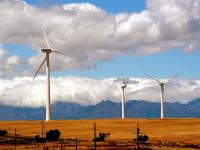
In a recent report, it was announced that the United States is now the leading producer of wind-power. Based on the amount of wind energy produced in 2008, the United States took Germany’s place as the leading producer of wind energy. With the new administration emphasizing the importance of alternative energy, solar panel development is also expected to rise in 2009, likely to top the solar-production list as well. While the United States produces more wind energy in net amount, Spain, Germany and Denmark currently lead the relative amount of wind energy produced compared to fossil-fuel sources of energy in their respective countries.
Though the current financial crisis is expected to slow development, alternative energy remains a priority among leading politicians and many expect these energy options will have overall growth over the course of the year in the United States. The European Union is also promising more emphasis on alternative energy, pledging to double the current amount of renewable energy produced from 10% of total energy consumption to 20% by 2020.
Curricula Links:
The Photoelectric Effect in Photovoltaic Cells (Physics, Chemistry)
Power Politics Concerning Alternative Energy (American Government, Environmental Science)
Environmental Chemistry and the Burning of Fossil Fuels (Chemistry)
Snakes may be in decline worldwide
Age Level: K-2
Key Term: snakes;biodiversity
Story Type: In the News

A sharp decline in snake numbers would likely have serious consequences for many ecosystems.
Forests Expand in Europe, North America and Central Asia
Age Level: K-2
Story Type: In the News
Topic: Climate & Weather, Biodiversity/Wildlife, Water, Oceans, Energy, Geography, STEM, Project-Based Learning

Forests in Europe, North America, the Caucasus, and Central Asia have expanded steadily over the last two decades, increasing by more than 25 million hectares — an area slightly larger than the United Kingdom — since 1990, a UN report says. In Europe alone, forested areas increased by 17 million hectares from 1990 to 2010, with the volume of forests growing by more than 430 million cubic meters annually, according to the Global Forest Resource Assessment 2010.
Read the rest of the article here.
Photo Credits: Nicholas T/flickr/Creative Commons
For Eagles, a Winning Mix of Wind, Biodiesel and Solar
Age Level: K-2
Key Term: Renewable Energy, Los Angeles, Sports facilities, Sports, Football, Stadium, Lincoln Financial Field, Philadelphia, Seattle, Portland, Meadowlands, St. Louis
Story Type: In the News
Topic: Energy, Geography, Project-Based Learning, Waste Management/Recycling
Sports arenas and stadiums are all about getting the most number of people to spend the maximum amount of money in the shortest amount of time possible. But a growing number of sports buildings from Boston to Los Angeles are becoming efficient in other ways, by saving energy and reducing waste with solar panels, low-flush toilets and composting.
On Thursday, the Philadelphia Eagles will announce perhaps the most ambitious green initiative yet: the installation of about 2,500 solar panels, 80 20-foot-high wind turbines and a generator that runs on natural gas and biodiesel so that Lincoln Financial Field, the Eagles’ home, will be the first stadium capable of generating all its own electricity.
Becoming self-sufficient in energy is the latest in a string of environmentally friendly measures the Eagles have taken since they opened their stadium in 2003. (Coincidentally, the team’s primary color is green.) Since then, many teams have introduced similar efficiency programs, and the four major sports leagues have set up programs to help their teams share information about how to use less energy, reduce waste and save money.
Sculpture designed to provoke thought about water
Age Level: K-2
Key Term: Environmental Issues, Legislation, Water Conservation, Floods and Drought, Geography
Story Type: In the News
Topic: Water, Geography

The newly developed CityCenter community in Las Vegas, Nev. recently added a piece of environmental art to its fine art collection. The 87-foot long, 3,700 pound sculpture hangs horizontally from steel cables above a registration desk. The sculpture depicts the Colorado River, complete with its meanders and swells at Lake Powell and Lake Mead. The sculpture was also made with environmentally conscious materials, being cast in reclaimed silver. It is aptly named "Silver River."
The sculpture’s artist, Maya Lin, reflects on her work by saying "Water is going to become more and more of a debate. I’m asking people to take a look at the natural world around them." Las Vegas’ major source of water is the Colorado River and with increasing droughts and demands for water, there is substantial concern that there will not be enough water to sustain the city in coming years.
This infusion of art and environmental consciousness is one of Lin’s trademarks. Growing up in Athens, Ohio during the 1970s, she was exposed to environmental issues at an early age. In 1969, the Cuyahoga River, located in Ohio, caught on fire as a result of its heavily polluted waters. This initiated a massive public response, making Ohio the focal point of national environmental awareness and legislation that would follow. In addition to her artistic pursuits, Lin also sits on the board of the Natural Resources Defense Council.
Her other environmental projects include "Storm King Wavefield," an environmental reclamation project at the site of a former gravel pit in Mountainville, N.Y. For this project she created waves in a field by forming earth and grass mounds. Her more recent work, "What is Missing," is a multisite international project that focuses on habitats and species that are extinct or disappearing and provides information on ways to help protect the environment. The main element of the project is a giant megaphone that plays the sounds of endangered species.
Related Resources:
Using the Landscape to Create Works of Art (Visual Arts, The Arts)
Fractals in Nature and Art (Visual Arts, The Arts, Geometry, Algebra I, Mathematics)
Representations of the Natural World in Art (Visual Arts, The Arts, Social Studies, Language Arts)
Photo: Sam Morris, Las Vegas Sun
Six Department of Energy Projects You've Never Heard of But Should
Age Level: K-2
Key Term: Renewable Energy, Department of Energy, Federal Government, Energy Research
Story Type: In the News
Topic: Climate & Weather, Water, Energy, Geography, STEM, Gardening

Rachel Cernansly of Planet Green reports-
For all its weaknesses and criticisms, DOE is doing some great stuff to encourage a clean energy future.
National Geothermal Student Competition
Launched yesterday, this competition challenges students to "conduct extensive research on the geothermal energy potential of the Rio Grande Rift geologic province located in southeastern Colorado and northeastern New Mexico."
It's meant to stimulate geothermal technology development—along with funding of other geothermal technologies—as well as increase geothermal education.
DOE will award as much as $100,000 to up to 10 college teams, which will have to use their research to produce data assessing the geologic, engineering, environmental, land use, policy, and cultural issues that all must be addressed as part of geothermal development in the U.S.
Clean Energy for Small Businesses
DOE announced $57 million last month to support commercialization of clean energy technologies for 33 small businesses in 16 states. The projects, led by small businesses, are partnerships with universities, national labs, and large businesses, and include developing technologies like a biodiesel from algae in Tennessee to self-erecting wind turbines that can be manufactured on site.
Energy efficiency in the federal government
DOE awarded 31 individuals or teams across the federal government for improving energy, water, and/or vehicle fleet efficiency—initiatives that DOE says collectively saved taxpayers nearly $42 million in one year alone, and saved the equivalent of 190,000 tons of CO2 emissions. Energy Secretary Steven Chu recognizes the symbolic significance of this. He said, "As the single largest consumer of energy in the country, the federal government has a responsibility and an opportunity to lead by example in implementing clean energy projects that save taxpayers money, create new jobs, and reduce carbon pollution."
Forgot to turn off the lights? There's an app for that
Story Type: In the News
Topic: Energy, Gardening

Zerofootprint's TalkingPlug device turns everyday electrical outlets into miniature communications hubs, allowing remote monitoring and control of energy use by smartphone. Think of it as two more prongs in the coming smart grid revolution.
Drought in Australia Food Bowl Worsens
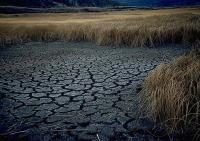
Drought in Australia's main food growing region of the Murray-Darling river system has worsened, with water inflows over the past two years at an all-time low, the government's top water official said on Tuesday. The drought will hit irrigated crops such as rice, grapes and horticulture the hardest, but would have less impact on output of wheat, which depends largely on rainfall during specific periods and is on track to double after two years of shrunken crops.
Curricula Links:
Economics and Drought (Economics)
Understanding Droughts (World History, U.S. History, Geography)
Cultural Characteristics Influence a Region's Character (Geography, Economics, Science)
Six Department of Energy Projects You've Never Heard of But Should
Age Level: K-2
Key Term: Renewable Energy, Department of Energy, Federal Government, Energy Research
Story Type: In the News
Topic: Climate & Weather, Water, Energy, Geography, STEM, Gardening

Rachel Cernansly of Planet Green reports-
For all its weaknesses and criticisms, DOE is doing some great stuff to encourage a clean energy future.
National Geothermal Student Competition
Launched yesterday, this competition challenges students to "conduct extensive research on the geothermal energy potential of the Rio Grande Rift geologic province located in southeastern Colorado and northeastern New Mexico."
It's meant to stimulate geothermal technology development—along with funding of other geothermal technologies—as well as increase geothermal education.
DOE will award as much as $100,000 to up to 10 college teams, which will have to use their research to produce data assessing the geologic, engineering, environmental, land use, policy, and cultural issues that all must be addressed as part of geothermal development in the U.S.
Clean Energy for Small Businesses
DOE announced $57 million last month to support commercialization of clean energy technologies for 33 small businesses in 16 states. The projects, led by small businesses, are partnerships with universities, national labs, and large businesses, and include developing technologies like a biodiesel from algae in Tennessee to self-erecting wind turbines that can be manufactured on site.
Energy efficiency in the federal government
DOE awarded 31 individuals or teams across the federal government for improving energy, water, and/or vehicle fleet efficiency—initiatives that DOE says collectively saved taxpayers nearly $42 million in one year alone, and saved the equivalent of 190,000 tons of CO2 emissions. Energy Secretary Steven Chu recognizes the symbolic significance of this. He said, "As the single largest consumer of energy in the country, the federal government has a responsibility and an opportunity to lead by example in implementing clean energy projects that save taxpayers money, create new jobs, and reduce carbon pollution."
"Freak" Hurricane Ike Will Cost $22 Billion

Hurricane Ike will be entered into the record books for the severe damage it inflicted in and around Galveston, Texas, experts say.
"This one's going to be famous for a long time, if for no other reason than it hit Texas, which hadn't gotten a strike by a damaging hurricane in 25 years," said Jeff Masters, director of Weather Underground, a private commercial forecasting service.
Curricula Links:
Weather Channel Video on Hurricanes (Earth Science)
Historical Data on Number of Hurricanes by Year (History, Mathematics)
Economics During a Hurricane (Economics, U.S. Government)
Eco-Friendly Billboard Debuts in Times Square
Key Term: Renewable Energy
Story Type: In the News
Topic: Energy

Around the holidays, there are many traditional sites to see in New York City, but this year, there will be a new attraction. A billboard lit completely by renewable energy will officially go on display in New York City’s Times Square on December 4th. Ricoh ® is launching the billboard to show that “…there are ways of being environmentally friendly to the planet, even on a billboard.” The structure, which will be equipped with 16 wind turbines and 64 solar panels is expected to save $12,000 to $15,000 in electricity costs every month, and would prevent 18 tons of carbon emissions from being generated in a traditional coal power plant. There will be no back up generator for this billboard, and company owners are prepared for it to “go dark” if it has insufficient power.
Curricula Links:
Calculate Your Ecological Footprint (Environmental Science)
The Great Energy Debate (Geography, Language Arts, Mathematics)
World War II Posters with Environmental Messages (American History, Economics, The Arts)
Empire States Building Goes Green, one building at a time
Key Term: Windows, Green Buildings, Efficiency
Story Type: In the News
Topic: Climate & Weather, Energy, Waste Management/Recycling
You want to ask him: How many do you break?
That's because Anthony Concepcion does windows- lots of windows.
He's working at the Empire State Building. As part of an effort to become certifiably green, the office tower is removing, retrofitting and replacing each of its 6,514 double-hung, dual-pane windows. That's 26,056 panes of glass.
Solar energy making a return to White House
Age Level: K-2
Key Term: Renewable Energy, Solar energy, President
Story Type: In the News
Topic: Climate & Weather, Energy, STEM, Gardening
The White House is going solar after all - a home improvement that carries modest energy benefits but much larger symbolic importance.
It isn't the first time the White House has used solar energy. President Jimmy Carter put 32 solar panels on the roof in the late 1970s, but President Ronald Reagan removed them in 1986. Two grass-roots campaigns have recently been lobbying President Obama to restore them as a sign of his commitment to renewable energy.
The Greening of Environmental Ed
Key Term: Environmental Education
Story Type: In the News

Teachers focus on complexity, evidence, and letting students draw their own conclusions.
Reverse auction ineffective at solving Maryland’s crabbing woes
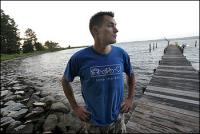
This summer, Maryland tried to address a growing problem in the Chesapeake Bay: there are too few blue crabs and too many licensed watermen. Efforts were directed to a particular set of watermen, the 3,676 individuals holding "limited crab catcher" licenses. A little more than half of the watermen in Maryland hold this kind of license. These watermen are limited to setting up to 50 wire-mesh pots to trap crabs underwater and don’t often make their living off crabbing. Many don’t even take advantage of their licensee privileges. According to the Maryland Department of Natural Resources, therein lies the problem.
When that many crabbers hold licenses, yet do not use them for years, it makes it difficult to forecast each year’s harvest. If those who have not crabbed for years suddenly decide to, it could cause the state to exceed catch limits.
Maryland decided to team with scholars to use modern economic theory to solve this problem. They came up with the idea of a "reverse auction."
In this auction, the state asked crabbers to name their own price for selling their license to the state. The theory behind reverse auctions is that since bidders are not allowed to know what others bid and the buyer has the right to decline bids, bidders will be enticed to bid low. This would allow the state to buy licenses as cheaply as possible.
The state went into the auction hoping to buy 2,000 licenses with money the federal government provided. The auction closed on July 31, with only 494 bids received and over half for $5,000 or more, an offer the state considered too high. One waterman offered his license for $425 million, an obvious act of protest to the auction.
So why were people so reluctant to participate? Some feared they would bid too low and be cheated. Some still make their living on the water. But to many, it is unsellable because it is proof of their identity. It is part of their heritage. It is tradition. In the words of one license holder when asked about selling, "I would feel like a part of me was gone."
The bid outcome forced the state to scrap the auction. The state is now offering to buy licenses at a fixed price of $2,260. Despite the results of the Maryland auction, Virginia is currently trying a reverse auction, with bids due November 1st.
Related Resources:
Stabilizing the World’s Fisheries (Environmental Science, Biology, Economics)
Human Impact on Great Barrier Reef: Overfishing (Environmental Science, Biology)
Oceanographic Specialists (Biology, Earth Science, Chemistry, Physics, Environmental Science
Photo: James A. Parcell, The Washington Post
Green jobs come to the urban poor
Key Term: Los Angeles, Solar panels
Story Type: In the News
Topic: Climate & Weather, Energy, Service-Learning
Many of Los Angeles's urban poor have bigger concerns than climate change. Nonetheless, the past few years have seen formerly homeless and jobless folks planting gardens, installing solar panels, and working other green jobs as they make upgrades to increase the efficiency of their homes. According to an article in the L.A. Times, green job programming, particularly green construction, is helping scores of citizens get back on their feet while helping to build a more sustainable community.
Oceans choking on CO2, study says
Age Level: K-2
Story Type: In the News
Topic: Climate & Weather, Water, Energy, Environmental Health, Project-Based Learning

SYDNEY - The world's oceans are virtually choking on rising greenhouse gases, destroying marine ecosystems and breaking down the food chain -- irreversible changes that have not occurred for several million years, a new study says.
The changes could have dire consequences for hundreds of millions of people around the globe who rely on oceans for their livelihoods.
"It's as if the Earth has been smoking two packs of cigarettes a day", said the report's lead-author Australian marine scientist Professor Ove Hoegh-Guldberg.
Paris' Popular Bike Rental Sparks Electric Car Plans
Key Term: Alternate Energy
Story Type: In the News
Topic: Climate & Weather, Energy, Project-Based Learning, Gardening
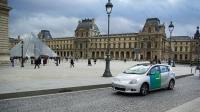
Paris plans to launch the world's largest electric car access scheme in September of next year. The city is hoping to emulate the popularity of its easy rental system for bicycles, known as Velib.
This time around, Autolib, which stands for auto liberte, will allow Parisians to rent an electric vehicle whenever they need to, with the goal of cutting down on car ownership, traffic and pollution.
Paris' pedestrians and cyclists have had a lot to celebrate in a decade of pro-green policies. Since 2001, traffic in the city has dropped nearly 25 percent because of better public transport and restrictions on automobiles.
DOE awards $76 million to green building projects
Age Level: K-2
Story Type: In the News
Topic: Energy
Recovery Act awards from the DOE continue with the announcement of $76 million in funding for green building projects.
Electronic Field Trip to North Cascades National Park
Key Term: Glaciers, National Park
Story Type: In the News
Topic: Climate & Weather, Water, Energy, Geography
October 13 broadcast focusing on climate change.
Join the National Park Foundation on October 13 for an electronic field trip to North Cascades National Park. Electronic Field Trips give students the opportunity to learn about a particular topic through national parks they may never get a chance to visit. Each trip consists of a televised broadcast from a national park featuring National Park Service Rangers and youth hosts, as well as a website with lesson plans for teachers and interactive games for students. Several past field trips are archived online and available for immediate viewing.
Mapping Traffic's Toll on Wildlife
Age Level: K-2
Key Term: Wildlife, Roadkill
Story Type: In the News
Topic: Oceans, Geography, STEM, Gardening

DAVIS, Calif. — To Ron Ringen, a retired veterinarian, roadkill is a calling. Nearly every week for the last seven months, Mr. Ringen, 69, has driven the roads north of this college town near Sacramento, scanning the pavement for telltale bits of fur and feathers.
Pulling over, Mr. Ringen gets out, snaps photographs and uses his GPS device to record the precise location where creatures met their end. He has logged more than 1,400 animals, from the miniature (one-ounce song sparrows) to the gargantuan (a 1,500-pound black Angus bull).
Are we in an age of great earthquakes?
Key Term: earth quakes
Story Type: In the News
Topic: Geography

Top 10 Green Reads of the Last 10 Years
Story Type: In the News
Topic: Climate & Weather, Biodiversity/Wildlife, Water, Energy, Geography, Environmental Health, Service-Learning, STEM, Project-Based Learning, Gardening, Waste Management/Recycling
The publication of Silent Spring in 1962 is widely considered to be the birth of the modern environmental movement. Since those early roots took hold, a series of seminal books have contributed to its growth and branched the discourse.
For 50 years, environmental writing has played an important role in defining and redefining the most pressing problems of the day—as well as offering solutions.
The last 10 years, of course, have been no different. In fact, during the past decade science and environmental writers produced a number of works that have become instant classics.
Photo Credit: Bill McKibben
Certainly, no environmental reading list would be complete without these top 10 green reads of the last 10 years:
10. Cradle 2 Cradle
Architect William McDonough and chemist Michael Braungart's book, Cradle to Cradle, is a manifesto in ecologically intelligent design.
Published in 2002, the book proposes replacing the antiquated design processes of the Industrial Revolution with one that's in harmony with nature.
Photo Credit: William McDonough and Michael Braungart
Check out the rest of the top 10 here.
Dust levels in Earth's atmosphere contribute to climate change
Story Type: In the News
Topic: Climate & Weather, Energy, Environmental Health, STEM, Project-Based Learning

The amount of dust in the Earth's atmosphere has doubled over the last century, according to a new study; and the dramatic increase is influencing climate and ecology around the world.
The study, led by Natalie Mahowald, associate professor of earth and atmospheric sciences, used available data and computer modeling to estimate the amount of desert dust, or soil particles in the atmosphere, throughout the 20th century. It's the first study to trace the fluctuation of a natural (not human-caused) aerosol around the globe over the course of a century.
Photo Credit: Cornell University
Penguins in peril find refuge in New Zealand

Tiny penguins face threats from dwindling fish supplies and habitat destruction by humans.
Oil Spill Cleanup Workers Include Many Very, Very Small Ones
Key Term: Oil Spill, Bacteria
Story Type: In the News
Topic: Water, Energy, Project-Based Learning
Among the hidden stars of the gulf cleanup is an oil-hungry bacterium that Dr. Seuss could have named — Alcanivorax. It and fellow microbes are breaking down a significant amount of the oil that gushed into the environment from BP’s runaway well, scientists say. The microbial feasting is known as biodegradation.
Old Oil Rig Turned Into Scuba Divers' Dream Hotel
Key Term: Sustainable design, Reuse
Story Type: In the News
Topic: Water, Geography, Waste Management/Recycling

This time, it's for real: The type of project proposed by Morris Architects for the (pre-BP spill) Gulf of Mexico has actually been carried out in a remote part of the Pacific Ocean, where an old oil-drilling rig has been turned into a hotel catering to snorkelers and scuba divers.
The Seaventures Dive Resort, located in the Celebes Sea, surrounded by Borneo, Indonesia, and the Philippines, is hardly the swank scene envisioned in the architects' rendering, according to the Wall Street Journal's report on the hotel.
Students aim to save endangered alligator snapping turtle
Age Level: 9-12
Story Type: In the News
Topic: Biodiversity/Wildlife

Peoria, Ill. — Are high school students the missing link toward ensuring the alligator snapping turtle doesn’t go the way of the dodo bird and the passenger pigeon?
Is that even a real question?
The answer to each is a resounding yes, at least to Paul Ritter, a sublimely enthusiastic environmental science teacher at Pontiac Township High School. Ritter is embarking on a campaign to "bring (the) species back from the brink of extinction.”
Ritter hopes to get some turtles to raise in his classroom in Pontiac. Then he hopes other science classes will sign on in the future. “It’s both an academic pursuit and the pursuit of saving the species,” Ritter said. “You couldn’t have one without the other. What an opportunity for the students.”
Pontiac senior Amanda Muir agreed with her teacher.
“I don’t know much about turtles,” said Muir, “but I plan to learn. Being involved in a project like this where the goal is to actually save a species is pretty exciting.”
Read the full story at the Peoria Journal Star.
Photo credit: Fred Zwicky/Journal Star
China launches armada to head off algae plume
Age Level: K-2
Story Type: In the News
Topic: Climate & Weather, Biodiversity/Wildlife, Water, Project-Based Learning
Fertilizer run-off and record high temperatures are causing unprecedented outbreaks of algae- known as the green tide- off the coast of Qingdao, China. Clean up crews are now scrubbing an area of about 150 mi sq.
Hawaiian Commercial and Sugar Gets $10 Million to Develop Biofuels for Navy
Age Level: K-2
Key Term: Biofuel, Sugar
Story Type: In the News
Topic: Climate & Weather, Biodiversity/Wildlife, Energy
HONOLULU — The federal government has turned to a 130-year-old Hawaii sugar grower for help in powering the Navy and weaning the nation off a heavy reliance on fossil fuels.
It will spend at least $10 million over the next five years to fund research and development at Maui cane fields for crops capable of fueling Navy fighter jets and ships.
Serengeti Road Plan Offers Prospects and Fears
Age Level: K-2
Key Term: Wildlife, Serengeti, Savanna, Migration, Prairie, Africa, Tanzania, Maasai, Ecotourism
Story Type: In the News
Topic: Geography
SERENGETI NATIONAL PARK, Tanzania - Every spring, out here on this endless sheet of yellow grass, two million wildebeest, zebras, gazelles and other grazers march north in search of greener pastures, with lions and hyenas stalking them and vultures circling above.
It is called the Great Migration, and it is widely considered one of the most spectacular assemblies of animal life on the planet.
But how much longer it will stay that way is another matter. Tanzania's president, Jakaya Kikwete, plans to build a national highway straight through the Serengeti park, bisecting the migration route and possibly sending a thick stream of overloaded trucks and speeding buses through the traveling herds.
Scientists and conservation groups paint a grim picture of what could happen next: rare animals like rhinos getting knocked down as roadkill; fences going up; invasive seeds sticking to car tires and being spread throughout the park; the migration getting blocked and the entire ecosystem becoming irreversibly damaged.
"The Serengeti ecosystem is one of the wonders of the planet," said Anne Pusey, an evolutionary anthropologist at Duke University. "It must be preserved."
But it is election time in Tanzania, one of the poorest countries in the world, and Mr. Kikwete is embroiled in what political analysts say is the feistiest presidential race this country has seen.
Lowest Level of Sea Ice Ever in Artic
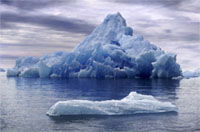
Declining ice thickness and what is looking like the second lowest coverage on record means that Arctic sea ice may well have reached its lowest levels ever in terms of total volume.
Curricula Links:
Northwest Passage Reopens Shipping Routes (Economics, World History)
Video Showing Ice Coverage for Past 40 Years (Geography, Earth Science)
Lesson on Surface Area and Volume (Mathematics, Geometry)
School kids help with turtle research project in Forest Park
Age Level: K-2, 3-5, 6-8, 9-12
Story Type: In the News
Topic: Biodiversity/Wildlife
St. Louis, Mo. — Turtles can teach us a lot about our environment, say researchers at the St. Louis Zoo who are tracking the reptiles who live inside Forest Park.
Ten turtles in Forest Park that have been fitted with tracking devices will be studied for their movements and health status. Another 10 turtles at Washington University's Tyson Research Center in rural St. Louis County will also be monitored as a comparison.
Fifth- and sixth-grade students from the eco club at South City Prepatory Academy were on hand Wednesday to help researchers track down the turtles in Forest Park. The students used tracking devices as they marched through the woods and then watched as scientists measured and weighed the turtles.
The students were participating in the zoo's outreach efforts to introduce city kids to nature and animal habitats.
Photo credit: Laurie Skrivan
Read the story at STLtoday.com.
Dutch Olympian to teach orangutans how to swing through trees
AMSTERDAM - In an evolutionary twist, a Dutch zoo is calling on the services of an Olympic gymnast to teach orangutans how to swing through the trees.
The zoo Ouwehands Dierenpark Rhenen, located in the center of the country, said it had renovated its orangutan enclosure to allow the long-limbed, hairy, auburn-colored primates to swing from tree to tree in an outdoor setting above the viewing public — but the animals appear to have lost the knack of it.
Monarch butterfly count bounces back from bad year
Story Type: In the News
Topic: Climate & Weather, Biodiversity/Wildlife, Geography, Environmental Health

Monarch butterfly colonies in Mexico more than doubled in size this winter after bad storms devastated their numbers a year ago, conservationists said on Monday although the migrating insect remains under threat.
Millions of butterflies make a 2,000-mile journey each year from Canada to winter in central Mexico's warmer weather but the size of that migration can vary wildly.
Fewer of the orange and black insects arrived in Mexico last year than ever before, researchers said, but the butterfly colonies increased by 109 percent this year to cover roughly 10 acres of forest. Researchers estimate the size of the butterfly colonies based on the area they occupy in a forest.
Photo Credit: monarch-butterfly.info
Waves Power Delivers Electricity to US Grid for First Time
Age Level: K-2
Key Term: Renewable Energy, Hawaii
Story Type: In the News
Topic: Climate & Weather, Water, Energy, Geography, STEM, Gardening
While wave power often seems like the poor cousin of the renewable energy world, and frankly doesn't have the practical potential of wind or solar power, tapping the power of the sea does have its place and this next one is worth a bit of hand clapping: One of Ocean Power Technologies' PowerBuoys can claim to be the first wave power device to deliver electricity to the US grid.
The Mystery of Mangroves
Age Level: K-2
Key Term: Floods, Hurricanes
Story Type: In the News
Topic: Climate & Weather, Water, Geography
There are more than 70 species of mangrove trees and shrubs. The best known, such as the red mangrove, are highly adapted to an amphibious lifestyle: Their roots shield them from salt intrusion, and their waxy leaves prevent the loss of precious freshwater.
Despite all this, mangroves are one of the most endangered ecosystems on the planet; they are cleared to make way for rice paddies and shrimp ponds in some areas and for condominiums and subdivisions in others. All told, humans have destroyed 20 percent of their global extent since 1980.
Eco-Friendly Billboard Debuts in Times Square
Key Term: Renewable Energy
Story Type: In the News
Topic: Energy

Around the holidays, there are many traditional sites to see in New York City, but this year, there will be a new attraction. A billboard lit completely by renewable energy will officially go on display in New York City’s Times Square on December 4th. Ricoh ® is launching the billboard to show that “…there are ways of being environmentally friendly to the planet, even on a billboard.” The structure, which will be equipped with 16 wind turbines and 64 solar panels is expected to save $12,000 to $15,000 in electricity costs every month, and would prevent 18 tons of carbon emissions from being generated in a traditional coal power plant. There will be no back up generator for this billboard, and company owners are prepared for it to “go dark” if it has insufficient power.
Curricula Links:
Calculate Your Ecological Footprint (Environmental Science)
The Great Energy Debate (Geography, Language Arts, Mathematics)
World War II Posters with Environmental Messages (American History, Economics, The Arts)
Outdoors and Out of Reach, Studying the Brain
Key Term: Attention, Pyschology
Story Type: In the News
Topic: Environmental Health
GLEN CANYON NATIONAL RECREATION AREA, Utah — Todd Braver emerges from a tent nestled against the canyon wall. He has a slight tan, except for a slim pale band around his wrist. For the first time in three days in the wilderness, Mr. Braver is not wearing his watch. “I forgot,” he says.
It is a small thing, the kind of change many vacationers notice in themselves as they unwind and lose track of time. But for Mr. Braver and his companions, these moments lead to a question: What is happening to our brains?
Another beaver makes Bronx River home- doubles the total beaver population
Age Level: K-2
Key Term: Wildlife, New York City, Pelts, Habitat Restoration
Story Type: In the News
Topic: Water, Geography
Hot dam! The first beaver found in the city in 200 years finally has company after three years of solitude on the Bronx River.
A beaver named Jose is now sharing his life with another buck-toothed mammal - but the relationship is unclear.
"A companion, a friend, a mate, an associate - we don't know what it is," said Rep. Jose Serrano, for whom the first beaver was named after its discovery in 2007.
First wild polar-grizzly bear hybrid offspring discovered

It's official: polar bears and grizzlies are interbreeding in the wild - and so are their offspring, according to DNA tests cited by TheStar.com. The offspring of a female polar-grizzly bear was discovered this month in Canada, proving that there are more of these hybrid animals in existence than the previously confirmed 17 located in zoos.
Six Rules for Eco-friendly Gardening
Story Type: In the News
Topic: Climate & Weather, Water, Energy, Geography, Environmental Health, Green Schools, STEM

Think about the millions of tons of waste materials that are hauled away, buried or burned each day from landscaping and groundskeeping operations. This includes trees, shrubs, brush, lumber, asphalt and concrete, just to name a few.
Also, consider the millions of gallons of water, pesticides, fertilizers and fuels used to keep gardens, yards and landscapes healthy, lush and green. The costs of these materials — both economic and environmental — can easily be reduced or eliminated with updated landscaping methods.
Click here to view some green landscaping elements you can use in your daily gardening routine and do your part for the planet.
Photo Credit: Mother Nature Network
World Oceans Day clouded by oil spill
Age Level: K-2
Story Type: In the News
Topic: Biodiversity/Wildlife, Environmental Health

Conservation groups, schools, businesses and governments across the globe are planning events and activities Tuesday to celebrate the world’s oceans, a day of tribute tinged by worry over the impact of a devastating oil spill in the Gulf of Mexico.
The United Nations recognizes June 8 as World Oceans Day. The “holiday” was officially celebrated for the first time last year, though the concept of a day to pay homage to the world’s oceans was first proposed in 1992 by Canada at the Earth Summit in Rio de Janeiro.
Gulf Oil Plume is not Breaking Down Fast, Study Says
Age Level: K-2
Key Term: Oil Spill, Gulf of Mexico
Story Type: In the News
Topic: Water, Energy, Environmental Health, Project-Based Learning
New research confirms the existence of a huge plume of dispersed oil deep in the Gulf of Mexico and suggests that it has not broken down rapidly, raising the possibility that it might pose a threat to wildlife for months or even years.
The study, the most ambitious scientific paper to emerge so far from the Deepwater Horizon spill, casts some doubt on recent statements by the federal government that oil in the gulf appears to be dissipating at a brisk clip. However, the lead scientist in the research, Richard Camilli, cautioned that the samples were taken in June and circumstances could have changed in the last two months.
Working at the park, teacher rangers share knowledge at Hoover site
Age Level: K-2
Key Term: National Parks
Story Type: In the News
Topic: Geography, Service-Learning
WEST BRANCH -- Dan Stevenson stood in the back of the cottage where Iowa native and future President Herbert Hoover was born in August 1874.
He explained to visitors how Hoover's father, Jesse Hoover, built the two-room cottage in 1871 for him, his wife, Hulda, and their oldest child, Theodore.
It is a job that Stevenson, an eighth-grade American history teacher at West Liberty Middle School, said appealed to his love of history.
Roman Decadence and Rising Seas
Age Level: K-2
Key Term: Roman Empire, Italy, Feasts, Fish Tank
Story Type: In the News
Topic: Climate & Weather, Water, Energy, Geography

Sea level is rising in relation to many of the world’s shorelines, and has been for decades. The main reason is that the volume of the ocean is increasing as a result of the melting of land ice and the warming of the sea itself. (Warm water expands, just as warm air does.)
Scientists once thought this volume increase had been going on, in fits and starts, for thousands of years. This widespread belief was often used as a debating point by climate-change skeptics, who argued that sea-level rise was nothing to worry about because it had existed throughout the history of human civilization.
But research in recent years has turned that notion on its head. The matter is not entirely settled, but some persuasive evidence points to the conclusion that the volume of the ocean was fairly stable for the last 2,000 years and began rising only recently, more or less in sync with industrialization. This is important because it suggests that sea level might be pretty sensitive to the greenhouse gases that humans are dumping into the atmosphere.
I made a brief mention of this issue in a long article on Sunday on sea-level rise but did not have the space to go into much detail. Here is some of the background:
Archaeological discoveries that shed light on ancient sea level are prized finds for the experts in this field. One of the most compelling studies of recent years was carried out by an Australian scientist named Kurt Lambeck, who worked with colleagues in Italy. They focused on ancient fish tanks built at the edge of the Mediterranean by the Romans over the 300 years when their civilization was at its height, ending in the second century A.D.
These tanks were sometimes decorative, but mostly they were used as storage pens to keep fish fresh for the lavish banquets that wealthy Romans held in their seaside villas. The tanks, described in some detail by Roman historians, have long fired the imaginations of classicists, since they represent Roman civilization at its decadent height. The tanks made an appearance in the popular Robert Harris novel Pompeii, for instance.
The Coral Pulse of Life
Story Type: In the News
Topic: Climate & Weather, Water, Geography, STEM, Project-Based Learning

Corals are marine organisms living in compact colonies of many identical individual polyps. The group includes the important reef builders that inhabit tropical oceans, which secrete calcium carbonate to form a hard skeleton. Coral reefs form some of the most diverse ecosystems on Earth.
They occupy less than one tenth of one percent of the world ocean surface, yet they provide a home for about twenty-five percent of all marine species, including fish, molluscs, worms, and crustaceans. Paradoxically, coral reefs flourish even though they are often surrounded by ocean waters that provide few nutrients. University of Miami (UM) Rosenstiel School of Marine & Atmospheric Science scientist Chris Langdon and colleagues have developed a new tool to monitor coral reef vital signs. By accurately measuring their biological pulse, scientists can better assess how climate change and other ecological threats impact coral reef health worldwide.
Read the rest of the article here.
Photo Credit: Coral Reef Info
Bush protects unique areas across the Pacific
Age Level: K-2
Key Term: Ecology, Habitats, Oceanography, Endangered Species
Story Type: In the News
Topic: Water
On Tuesday, January 8, the former President Bush in his last days in office made an announcement to protect three major marine areas in the Pacific Ocean that has been acclaimed as “one of the most important moves in marine conservation in recent decades." Among the protected marine monuments is the largest live coral cover in the world and Mariana’s Trench, Earth’s deepest underwater canyon. In total, 195,000 square miles are protected in Tuesday’s announcement. The status as a monument protects this area from overfishing, oil drilling, and other environmentally hazardous or detrimental human activity. These areas, previously owned by the Nature Conservancy, will primarily be used for scientific research and exploration of marine ecosystems.
Curricula Links:
A multi-faceted Approach to Biodiversity (Economics, American Government, Biology)
Finding Solutions to the Overfishing Problem (Environmental Science, Biology)
Oceanographic Specialties (Earth Science, Chemistry, Physics)
Photo Credit: Christine Huffard
Journalist dives into Gulf, can see only oil
Age Level: K-2
Key Term: Oil Spill, oceans
Story Type: In the News
Topic: Environmental Health
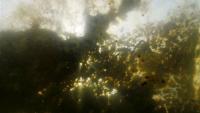
Some 40 miles out into the Gulf Of Mexico, I jump off the boat into the thickest patch of red oil I've ever seen. I open my eyes and realize my mask is already smeared. I can't see anything and we're just five seconds into the dive.
Canada's Lost Salmon Return in Droves
Age Level: K-2
Key Term: Spawning, Salmon
Story Type: In the News
Topic: Water, Geography, Project-Based Learning
Every year, sockeye salmon return to the rivers of western Canada to make their arduous upstream journey to calmer spawning grounds. It is a seasonal touchstone that signifies the approaching end of summer, one that has been observed for centuries.
The only problem is that some years, like in 2009, the salmon don't return.
US Leads World in Wind Energy Production
Age Level: K-2
Key Term: Renewable Energy
Story Type: In the News
Topic: Energy

In a recent report, it was announced that the United States is now the leading producer of wind-power. Based on the amount of wind energy produced in 2008, the United States took Germany’s place as the leading producer of wind energy. With the new administration emphasizing the importance of alternative energy, solar panel development is also expected to rise in 2009, likely to top the solar-production list as well. While the United States produces more wind energy in net amount, Spain, Germany and Denmark currently lead the relative amount of wind energy produced compared to fossil-fuel sources of energy in their respective countries.
Though the current financial crisis is expected to slow development, alternative energy remains a priority among leading politicians and many expect these energy options will have overall growth over the course of the year in the United States. The European Union is also promising more emphasis on alternative energy, pledging to double the current amount of renewable energy produced from 10% of total energy consumption to 20% by 2020.
Curricula Links:
The Photoelectric Effect in Photovoltaic Cells (Physics, Chemistry)
Power Politics Concerning Alternative Energy (American Government, Environmental Science)
Environmental Chemistry and the Burning of Fossil Fuels (Chemistry)
Snakes may be in decline worldwide
Age Level: K-2
Key Term: snakes;biodiversity
Story Type: In the News

A sharp decline in snake numbers would likely have serious consequences for many ecosystems.
Gulf oil spill: Animals can't escape the muck
Age Level: K-2
Story Type: In the News
Topic: Environmental Health
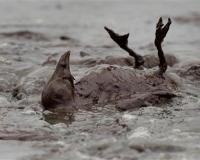
The most recent estimates put the rate of the Gulf oil leak at nearly 1 million gallons of oil a day. Oil from the Deepwater Horizon rig explosion has now washed ashore on the coasts of Louisiana, Mississippi, Alabama and Florida, and oil in the Loop Current could travel up the East Coast as far as Cape Hatteras, N.C. More than 400 species are threatened by the spill, and the timing couldn't be worse.
Japanese Village Creates Art From Hues of Rice
Age Level: K-2
Key Term: Genetic Engineering, Riuce, Japan
Story Type: In the News
Topic: Biodiversity/Wildlife

INAKADATE, Japan — Nearly two decades ago, Koichi Hanada, a clerk in the village hall, received an unusual request from his superior: find a way to bring tourists to this small community in rural northern Japan, which has rice paddies and apple orchards, but not much else.
Mr. Hanada, a taciturn but conscientious man, said he had spent months racking his brain. Then, one day he saw schoolchildren planting a rice paddy as a class project. They used two varieties of rice plants, one with dark purplish stalks and the other bright green ones. Then it struck him, why not plant the colored varieties in such a way as to form words and pictures?
Risk Taking Rises as Oil Rigs in Gulf Drill Deeper
Key Term: Gulf of Mexico, Deep sea drilling, Petroluem
Story Type: In the News
Topic: Water, Energy, Geography, Environmental Health, Project-Based Learning, Gardening
In a remote reach of the Gulf of Mexico, nearly 200 miles from shore, a floating oil platform thrusts its tentacles deep into the ocean like a giant steel octopus.
The $3 billion rig, called Perdido, can pump oil from dozens of wells nearly two miles under the sea while simultaneously drilling new ones. It is part of a wave of ultra-deep platforms — all far more sophisticated than the rig that was used to drill the ill-fated BP well that blew up in April. These platforms have sprung up far from shore and have pushed the frontiers of technology in the gulf, a region that now accounts for a quarter of the nation’s oil output.
Forests Expand in Europe, North America and Central Asia
Age Level: K-2
Story Type: In the News
Topic: Climate & Weather, Biodiversity/Wildlife, Water, Oceans, Energy, Geography, STEM, Project-Based Learning

Forests in Europe, North America, the Caucasus, and Central Asia have expanded steadily over the last two decades, increasing by more than 25 million hectares — an area slightly larger than the United Kingdom — since 1990, a UN report says. In Europe alone, forested areas increased by 17 million hectares from 1990 to 2010, with the volume of forests growing by more than 430 million cubic meters annually, according to the Global Forest Resource Assessment 2010.
Read the rest of the article here.
Photo Credits: Nicholas T/flickr/Creative Commons
U.S. water has large amounts of likely carcinogen, study says
Age Level: K-2
Key Term: Environmental Health, Water, urban environments
Story Type: In the News
Topic: Water, Environmental Health, Project-Based Learning
The Environmental Working Group found hexavalent chromium in the tap water of 31 out of 35 cities sampled.
Smallest Farmers Found? Amoebas Carry, Plant "Seeds"
In the developed world, the small farmer may be going extinct. But among some amoebas, small farming—really small farming—is still a viable survival strategy, a new study says.
Thousands of birds mysteriously fall from sky
Age Level: K-2
Key Term: Wildlife, Birds
Story Type: In the News
Topic: Environmental Health
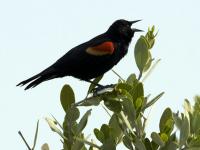
Thousands of dead birds suddenly drop out of the sky in Arkansas, all within a mile of one another.
Bridges Built to Help Borneo Orangutan Meet Mates
Age Level: K-2
Key Term: Endangered Species, Extinction, Orangutan, Indonesia, Primate, Ape, Palm Oil
Story Type: In the News
Topic: Biodiversity/Wildlife, Geography
KUALA LUMPUR, Malaysia – Endangered orangutans on Borneo island are using fire hoses slung across rivers by humans to help them move around isolated forests to potentially meet new mates and boost the species' chances for survival, an environmental group said Monday.
Malaysian authorities are building more of the makeshift bridges after some orangutans were spotted using them over the past year, said Marc Ancrenaz, co-founder of French-based conservation group Hutan, which is working with Malaysian state wildlife department officials on orangutan protection.
Conservationists estimate about 11,000 orangutans live in Malaysia's Sabah state in Borneo, but many are isolated from each other because swaths of forest have been cut for development, logging and oil palm plantations.
Environmental groups and wildlife authorities have been hooking up old fire hoses strung together between trees on different sides of rivers to help orangutans — which cannot swim — swing or walk across them. The first bridge was set up seven years ago, but it was only last year that an orangutan was captured on camera using one of them.
Witnesses have seen others doing so since then, prompting officials to build more bridges.
"It takes a while for the animals to get used to it. ... If we are not able to reconnect them, they will go extinct very soon," Ancrenaz said.
Terra-Gen Power Breaks Ground on World's Largest Wind Project
Age Level: K-2
Key Term: Renewable Energy, Wind Power, Mojave
Story Type: In the News
Topic: Climate & Weather, Energy, Gardening
MOJAVE, Calif.--(BUSINESS WIRE)--Today, political and business leaders joined Terra-Gen Power for the groundbreaking of the world’s largest wind energy project, the Alta Wind Energy Center (AWEC). When completed, AWEC will have the capacity to generate 1,550 megawatts of clean renewable energy— nearly double the capacity of the largest existing wind energy project and enough to supply power to 1.1 million people, or the equivalent of 275,000 homes.
Green jobs come to the urban poor
Key Term: Los Angeles, Solar panels
Story Type: In the News
Topic: Climate & Weather, Energy, Service-Learning
Many of Los Angeles's urban poor have bigger concerns than climate change. Nonetheless, the past few years have seen formerly homeless and jobless folks planting gardens, installing solar panels, and working other green jobs as they make upgrades to increase the efficiency of their homes. According to an article in the L.A. Times, green job programming, particularly green construction, is helping scores of citizens get back on their feet while helping to build a more sustainable community.
10 surprisingly easy sources of alternative energy
Story Type: In the News
Topic: Energy
Sure, you've heard of wind and solar power, biofuels, hydroelectric, tidal and wave power, but Mother Nature provides an endless bounty of alternative energy sources beyond those that we use today.
Forgot to turn off the lights? There's an app for that
Story Type: In the News
Topic: Energy, Gardening

Zerofootprint's TalkingPlug device turns everyday electrical outlets into miniature communications hubs, allowing remote monitoring and control of energy use by smartphone. Think of it as two more prongs in the coming smart grid revolution.
Sculpture designed to provoke thought about water
Age Level: K-2
Key Term: Environmental Issues, Legislation, Water Conservation, Floods and Drought, Geography
Story Type: In the News
Topic: Water, Geography

The newly developed CityCenter community in Las Vegas, Nev. recently added a piece of environmental art to its fine art collection. The 87-foot long, 3,700 pound sculpture hangs horizontally from steel cables above a registration desk. The sculpture depicts the Colorado River, complete with its meanders and swells at Lake Powell and Lake Mead. The sculpture was also made with environmentally conscious materials, being cast in reclaimed silver. It is aptly named "Silver River."
The sculpture’s artist, Maya Lin, reflects on her work by saying "Water is going to become more and more of a debate. I’m asking people to take a look at the natural world around them." Las Vegas’ major source of water is the Colorado River and with increasing droughts and demands for water, there is substantial concern that there will not be enough water to sustain the city in coming years.
This infusion of art and environmental consciousness is one of Lin’s trademarks. Growing up in Athens, Ohio during the 1970s, she was exposed to environmental issues at an early age. In 1969, the Cuyahoga River, located in Ohio, caught on fire as a result of its heavily polluted waters. This initiated a massive public response, making Ohio the focal point of national environmental awareness and legislation that would follow. In addition to her artistic pursuits, Lin also sits on the board of the Natural Resources Defense Council.
Her other environmental projects include "Storm King Wavefield," an environmental reclamation project at the site of a former gravel pit in Mountainville, N.Y. For this project she created waves in a field by forming earth and grass mounds. Her more recent work, "What is Missing," is a multisite international project that focuses on habitats and species that are extinct or disappearing and provides information on ways to help protect the environment. The main element of the project is a giant megaphone that plays the sounds of endangered species.
Related Resources:
Using the Landscape to Create Works of Art (Visual Arts, The Arts)
Fractals in Nature and Art (Visual Arts, The Arts, Geometry, Algebra I, Mathematics)
Representations of the Natural World in Art (Visual Arts, The Arts, Social Studies, Language Arts)
Photo: Sam Morris, Las Vegas Sun
Paris' Popular Bike Rental Sparks Electric Car Plans
Key Term: Alternate Energy
Story Type: In the News
Topic: Climate & Weather, Energy, Project-Based Learning, Gardening

Paris plans to launch the world's largest electric car access scheme in September of next year. The city is hoping to emulate the popularity of its easy rental system for bicycles, known as Velib.
This time around, Autolib, which stands for auto liberte, will allow Parisians to rent an electric vehicle whenever they need to, with the goal of cutting down on car ownership, traffic and pollution.
Paris' pedestrians and cyclists have had a lot to celebrate in a decade of pro-green policies. Since 2001, traffic in the city has dropped nearly 25 percent because of better public transport and restrictions on automobiles.
The Greening of Environmental Ed
Key Term: Environmental Education
Story Type: In the News

Teachers focus on complexity, evidence, and letting students draw their own conclusions.
Roman Decadence and Rising Seas
Age Level: K-2
Key Term: Roman Empire, Italy, Feasts, Fish Tank
Story Type: In the News
Topic: Climate & Weather, Water, Energy, Geography

Sea level is rising in relation to many of the world’s shorelines, and has been for decades. The main reason is that the volume of the ocean is increasing as a result of the melting of land ice and the warming of the sea itself. (Warm water expands, just as warm air does.)
Scientists once thought this volume increase had been going on, in fits and starts, for thousands of years. This widespread belief was often used as a debating point by climate-change skeptics, who argued that sea-level rise was nothing to worry about because it had existed throughout the history of human civilization.
But research in recent years has turned that notion on its head. The matter is not entirely settled, but some persuasive evidence points to the conclusion that the volume of the ocean was fairly stable for the last 2,000 years and began rising only recently, more or less in sync with industrialization. This is important because it suggests that sea level might be pretty sensitive to the greenhouse gases that humans are dumping into the atmosphere.
I made a brief mention of this issue in a long article on Sunday on sea-level rise but did not have the space to go into much detail. Here is some of the background:
Archaeological discoveries that shed light on ancient sea level are prized finds for the experts in this field. One of the most compelling studies of recent years was carried out by an Australian scientist named Kurt Lambeck, who worked with colleagues in Italy. They focused on ancient fish tanks built at the edge of the Mediterranean by the Romans over the 300 years when their civilization was at its height, ending in the second century A.D.
These tanks were sometimes decorative, but mostly they were used as storage pens to keep fish fresh for the lavish banquets that wealthy Romans held in their seaside villas. The tanks, described in some detail by Roman historians, have long fired the imaginations of classicists, since they represent Roman civilization at its decadent height. The tanks made an appearance in the popular Robert Harris novel Pompeii, for instance.
Japanese Village Creates Art From Hues of Rice
Age Level: K-2
Key Term: Genetic Engineering, Riuce, Japan
Story Type: In the News
Topic: Biodiversity/Wildlife

INAKADATE, Japan — Nearly two decades ago, Koichi Hanada, a clerk in the village hall, received an unusual request from his superior: find a way to bring tourists to this small community in rural northern Japan, which has rice paddies and apple orchards, but not much else.
Mr. Hanada, a taciturn but conscientious man, said he had spent months racking his brain. Then, one day he saw schoolchildren planting a rice paddy as a class project. They used two varieties of rice plants, one with dark purplish stalks and the other bright green ones. Then it struck him, why not plant the colored varieties in such a way as to form words and pictures?
Waves Power Delivers Electricity to US Grid for First Time
Age Level: K-2
Key Term: Renewable Energy, Hawaii
Story Type: In the News
Topic: Climate & Weather, Water, Energy, Geography, STEM, Gardening
While wave power often seems like the poor cousin of the renewable energy world, and frankly doesn't have the practical potential of wind or solar power, tapping the power of the sea does have its place and this next one is worth a bit of hand clapping: One of Ocean Power Technologies' PowerBuoys can claim to be the first wave power device to deliver electricity to the US grid.
The Greening of Environmental Ed
Key Term: Environmental Education
Story Type: In the News

Teachers focus on complexity, evidence, and letting students draw their own conclusions.
Sculpture designed to provoke thought about water
Age Level: K-2
Key Term: Environmental Issues, Legislation, Water Conservation, Floods and Drought, Geography
Story Type: In the News
Topic: Water, Geography

The newly developed CityCenter community in Las Vegas, Nev. recently added a piece of environmental art to its fine art collection. The 87-foot long, 3,700 pound sculpture hangs horizontally from steel cables above a registration desk. The sculpture depicts the Colorado River, complete with its meanders and swells at Lake Powell and Lake Mead. The sculpture was also made with environmentally conscious materials, being cast in reclaimed silver. It is aptly named "Silver River."
The sculpture’s artist, Maya Lin, reflects on her work by saying "Water is going to become more and more of a debate. I’m asking people to take a look at the natural world around them." Las Vegas’ major source of water is the Colorado River and with increasing droughts and demands for water, there is substantial concern that there will not be enough water to sustain the city in coming years.
This infusion of art and environmental consciousness is one of Lin’s trademarks. Growing up in Athens, Ohio during the 1970s, she was exposed to environmental issues at an early age. In 1969, the Cuyahoga River, located in Ohio, caught on fire as a result of its heavily polluted waters. This initiated a massive public response, making Ohio the focal point of national environmental awareness and legislation that would follow. In addition to her artistic pursuits, Lin also sits on the board of the Natural Resources Defense Council.
Her other environmental projects include "Storm King Wavefield," an environmental reclamation project at the site of a former gravel pit in Mountainville, N.Y. For this project she created waves in a field by forming earth and grass mounds. Her more recent work, "What is Missing," is a multisite international project that focuses on habitats and species that are extinct or disappearing and provides information on ways to help protect the environment. The main element of the project is a giant megaphone that plays the sounds of endangered species.
Related Resources:
Using the Landscape to Create Works of Art (Visual Arts, The Arts)
Fractals in Nature and Art (Visual Arts, The Arts, Geometry, Algebra I, Mathematics)
Representations of the Natural World in Art (Visual Arts, The Arts, Social Studies, Language Arts)
Photo: Sam Morris, Las Vegas Sun
Six Department of Energy Projects You've Never Heard of But Should
Age Level: K-2
Key Term: Renewable Energy, Department of Energy, Federal Government, Energy Research
Story Type: In the News
Topic: Climate & Weather, Water, Energy, Geography, STEM, Gardening

Rachel Cernansly of Planet Green reports-
For all its weaknesses and criticisms, DOE is doing some great stuff to encourage a clean energy future.
National Geothermal Student Competition
Launched yesterday, this competition challenges students to "conduct extensive research on the geothermal energy potential of the Rio Grande Rift geologic province located in southeastern Colorado and northeastern New Mexico."
It's meant to stimulate geothermal technology development—along with funding of other geothermal technologies—as well as increase geothermal education.
DOE will award as much as $100,000 to up to 10 college teams, which will have to use their research to produce data assessing the geologic, engineering, environmental, land use, policy, and cultural issues that all must be addressed as part of geothermal development in the U.S.
Clean Energy for Small Businesses
DOE announced $57 million last month to support commercialization of clean energy technologies for 33 small businesses in 16 states. The projects, led by small businesses, are partnerships with universities, national labs, and large businesses, and include developing technologies like a biodiesel from algae in Tennessee to self-erecting wind turbines that can be manufactured on site.
Energy efficiency in the federal government
DOE awarded 31 individuals or teams across the federal government for improving energy, water, and/or vehicle fleet efficiency—initiatives that DOE says collectively saved taxpayers nearly $42 million in one year alone, and saved the equivalent of 190,000 tons of CO2 emissions. Energy Secretary Steven Chu recognizes the symbolic significance of this. He said, "As the single largest consumer of energy in the country, the federal government has a responsibility and an opportunity to lead by example in implementing clean energy projects that save taxpayers money, create new jobs, and reduce carbon pollution."
DOE awards $76 million to green building projects
Age Level: K-2
Story Type: In the News
Topic: Energy
Recovery Act awards from the DOE continue with the announcement of $76 million in funding for green building projects.
10 Hottest Species
Age Level: K-2
Key Term: Endangered Species
Story Type: In the News

"America’s Hottest Species," a report produced by the Endangered Species Coalition, provides information on 10 of the top endangered wildlife, fish and plants experiencing the impacts of climate change.
The list includes species or groups of related species that are listed as threatened or endangered under the Federal Endangered Species Act or are candidates for listing.
Climate change threatens these species through habitat reduction, increases in disease and lowering of reproduction.
The species making the list were:
1. Kauai Creeper or ‘Akikiki
2. Elkhorn Coral
3. Bull Trout
4. Canada Lynx
5. Pacific Salmon
6. Leatherback Sea Turtle
7. Grizzly Bear
8. Bog Turtle
9. Western Prairie Fringed Orchid
10. Flatwoods Salamander
In addition, the Endangered Species Coalition conducted an online poll earlier this year to determine which species their audience thought was most threatened. The winner: polar bear.
Read the full news article or view the report
Hawaiian Commercial and Sugar Gets $10 Million to Develop Biofuels for Navy
Age Level: K-2
Key Term: Biofuel, Sugar
Story Type: In the News
Topic: Climate & Weather, Biodiversity/Wildlife, Energy
HONOLULU — The federal government has turned to a 130-year-old Hawaii sugar grower for help in powering the Navy and weaning the nation off a heavy reliance on fossil fuels.
It will spend at least $10 million over the next five years to fund research and development at Maui cane fields for crops capable of fueling Navy fighter jets and ships.
Dim Prospects for Many Land Mammals

The International Union for Conservation of Nature (IUCN) reports that nearly 25 percent of all land mammals are threatened with extinction and the outlook is dim for other animals as well. Some species alive today are only found in captivity, and many others are critically endangered, with slim chances of ever recovering.
Curricula Links:
See You Later, Alligator (World History, Geography, Language Arts)
Who's Afraid of the Reintroduced Wolf (Language Arts, Science)
Endangered Species Act Fact Sheet (Science, U.S. Government)
Visit Other News Articles in the News Archive
Gulf Oil Plume is not Breaking Down Fast, Study Says
Age Level: K-2
Key Term: Oil Spill, Gulf of Mexico
Story Type: In the News
Topic: Water, Energy, Environmental Health, Project-Based Learning
New research confirms the existence of a huge plume of dispersed oil deep in the Gulf of Mexico and suggests that it has not broken down rapidly, raising the possibility that it might pose a threat to wildlife for months or even years.
The study, the most ambitious scientific paper to emerge so far from the Deepwater Horizon spill, casts some doubt on recent statements by the federal government that oil in the gulf appears to be dissipating at a brisk clip. However, the lead scientist in the research, Richard Camilli, cautioned that the samples were taken in June and circumstances could have changed in the last two months.
Solar energy making a return to White House
Age Level: K-2
Key Term: Renewable Energy, Solar energy, President
Story Type: In the News
Topic: Climate & Weather, Energy, STEM, Gardening
The White House is going solar after all - a home improvement that carries modest energy benefits but much larger symbolic importance.
It isn't the first time the White House has used solar energy. President Jimmy Carter put 32 solar panels on the roof in the late 1970s, but President Ronald Reagan removed them in 1986. Two grass-roots campaigns have recently been lobbying President Obama to restore them as a sign of his commitment to renewable energy.
The Greening of Environmental Ed
Key Term: Environmental Education
Story Type: In the News

Teachers focus on complexity, evidence, and letting students draw their own conclusions.
Bush protects unique areas across the Pacific
Age Level: K-2
Key Term: Ecology, Habitats, Oceanography, Endangered Species
Story Type: In the News
Topic: Water
On Tuesday, January 8, the former President Bush in his last days in office made an announcement to protect three major marine areas in the Pacific Ocean that has been acclaimed as “one of the most important moves in marine conservation in recent decades." Among the protected marine monuments is the largest live coral cover in the world and Mariana’s Trench, Earth’s deepest underwater canyon. In total, 195,000 square miles are protected in Tuesday’s announcement. The status as a monument protects this area from overfishing, oil drilling, and other environmentally hazardous or detrimental human activity. These areas, previously owned by the Nature Conservancy, will primarily be used for scientific research and exploration of marine ecosystems.
Curricula Links:
A multi-faceted Approach to Biodiversity (Economics, American Government, Biology)
Finding Solutions to the Overfishing Problem (Environmental Science, Biology)
Oceanographic Specialties (Earth Science, Chemistry, Physics)
Photo Credit: Christine Huffard
Working at the park, teacher rangers share knowledge at Hoover site
Age Level: K-2
Key Term: National Parks
Story Type: In the News
Topic: Geography, Service-Learning
WEST BRANCH -- Dan Stevenson stood in the back of the cottage where Iowa native and future President Herbert Hoover was born in August 1874.
He explained to visitors how Hoover's father, Jesse Hoover, built the two-room cottage in 1871 for him, his wife, Hulda, and their oldest child, Theodore.
It is a job that Stevenson, an eighth-grade American history teacher at West Liberty Middle School, said appealed to his love of history.
US Leads World in Wind Energy Production
Age Level: K-2
Key Term: Renewable Energy
Story Type: In the News
Topic: Energy

In a recent report, it was announced that the United States is now the leading producer of wind-power. Based on the amount of wind energy produced in 2008, the United States took Germany’s place as the leading producer of wind energy. With the new administration emphasizing the importance of alternative energy, solar panel development is also expected to rise in 2009, likely to top the solar-production list as well. While the United States produces more wind energy in net amount, Spain, Germany and Denmark currently lead the relative amount of wind energy produced compared to fossil-fuel sources of energy in their respective countries.
Though the current financial crisis is expected to slow development, alternative energy remains a priority among leading politicians and many expect these energy options will have overall growth over the course of the year in the United States. The European Union is also promising more emphasis on alternative energy, pledging to double the current amount of renewable energy produced from 10% of total energy consumption to 20% by 2020.
Curricula Links:
The Photoelectric Effect in Photovoltaic Cells (Physics, Chemistry)
Power Politics Concerning Alternative Energy (American Government, Environmental Science)
Environmental Chemistry and the Burning of Fossil Fuels (Chemistry)
Offshore Wind Power Line Wins Backing
Age Level: K-2
Key Term: Renewable Energy, oceans, Wind Power, Turbines, East Coast, Mid-Atlantic
Story Type: In the News
Topic: Climate & Weather, Water, Energy, Geography, STEM, Gardening
WASHINGTON — Google and a New York financial firm have each agreed to invest heavily in a proposed $5 billion transmission backbone for future offshore wind farms along the Atlantic Seaboard that could ultimately transform the region’s electrical map.
The 350-mile underwater spine, which could remove some critical obstacles to wind power development, has stirred excitement among investors, government officials and environmentalists who have been briefed on it.
The Greening of Environmental Ed
Key Term: Environmental Education
Story Type: In the News

Teachers focus on complexity, evidence, and letting students draw their own conclusions.
Top 10 Green Reads of the Last 10 Years
Story Type: In the News
Topic: Climate & Weather, Biodiversity/Wildlife, Water, Energy, Geography, Environmental Health, Service-Learning, STEM, Project-Based Learning, Gardening, Waste Management/Recycling
The publication of Silent Spring in 1962 is widely considered to be the birth of the modern environmental movement. Since those early roots took hold, a series of seminal books have contributed to its growth and branched the discourse.
For 50 years, environmental writing has played an important role in defining and redefining the most pressing problems of the day—as well as offering solutions.
The last 10 years, of course, have been no different. In fact, during the past decade science and environmental writers produced a number of works that have become instant classics.
Photo Credit: Bill McKibben
Certainly, no environmental reading list would be complete without these top 10 green reads of the last 10 years:
10. Cradle 2 Cradle
Architect William McDonough and chemist Michael Braungart's book, Cradle to Cradle, is a manifesto in ecologically intelligent design.
Published in 2002, the book proposes replacing the antiquated design processes of the Industrial Revolution with one that's in harmony with nature.
Photo Credit: William McDonough and Michael Braungart
Check out the rest of the top 10 here.
Dust levels in Earth's atmosphere contribute to climate change
Story Type: In the News
Topic: Climate & Weather, Energy, Environmental Health, STEM, Project-Based Learning

The amount of dust in the Earth's atmosphere has doubled over the last century, according to a new study; and the dramatic increase is influencing climate and ecology around the world.
The study, led by Natalie Mahowald, associate professor of earth and atmospheric sciences, used available data and computer modeling to estimate the amount of desert dust, or soil particles in the atmosphere, throughout the 20th century. It's the first study to trace the fluctuation of a natural (not human-caused) aerosol around the globe over the course of a century.
Photo Credit: Cornell University
A Hole In The Ocean To Store Energy
Age Level: K-2
Story Type: In the News
Topic: Water, Energy, Geography
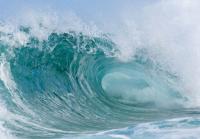
Imagine you’re looking for treasure on a small island in the middle of an ocean. The highest elevation on the island is just above sea level, which is rising because of global warming. (You’d rather not see that happen.)
Curricula Links:
The Great Energy Debate (Geography, Science, Language Arts, Math)
Underwater Windmill Helps Power Artic Village (Geography, Science)
Energy: The U.S. in Crisis? (U.S. History, Science)
The Greening of Environmental Ed
Key Term: Environmental Education
Story Type: In the News

Teachers focus on complexity, evidence, and letting students draw their own conclusions.
Lowest Level of Sea Ice Ever in Artic

Declining ice thickness and what is looking like the second lowest coverage on record means that Arctic sea ice may well have reached its lowest levels ever in terms of total volume.
Curricula Links:
Northwest Passage Reopens Shipping Routes (Economics, World History)
Video Showing Ice Coverage for Past 40 Years (Geography, Earth Science)
Lesson on Surface Area and Volume (Mathematics, Geometry)
Solar Boat Race Teaches Students Green-Energy Science
Age Level: K-2
Key Term: Renewable Energy, Solar Power, Boating Competition, Canoes
Story Type: In the News
Topic: Water, Energy, Service-Learning, STEM, Gardening
The country’s largest solar-powered boat competition got underway last Friday in California. 700 Southern California students from 42 schools began the seven-month long process to see who will be crowned winner of the Solar Cup Competition in May of 2011.
“We started Solar Cup nine years ago to promote clean recreation on our drinking-water reservoirs and to increase educational outreach to high-school students,” said Solar Cup Coordinator Julie Miller. “The competition has now evolved into a great opportunity for kids to learn about green technology and alternative energy sources. Solar Cup also promotes career development in clean energy, by encouraging kids to consider careers in engineering, construction, or as solar techs.”
All 42 student teams begin by assembling the same boat—identical canoe hulls made of marine-grade plywood. Roughly half of participating students gathered to build their boats Friday with the remaining teams scheduled to meet and assemble on Nov. 13.
Once the boats are assembled, students return to school and work for the next seven months outfitting the boats with solar panels, batteries, lights, rudders and steering systems—and, in some cases, snazzy paint jobs.
Student teams will reconvene at Lake Skinner in Temecula Valley on May 13 – 15, 2011, for the Solar Cup Competition.
Top 10 Green Reads of the Last 10 Years
Story Type: In the News
Topic: Climate & Weather, Biodiversity/Wildlife, Water, Energy, Geography, Environmental Health, Service-Learning, STEM, Project-Based Learning, Gardening, Waste Management/Recycling
The publication of Silent Spring in 1962 is widely considered to be the birth of the modern environmental movement. Since those early roots took hold, a series of seminal books have contributed to its growth and branched the discourse.
For 50 years, environmental writing has played an important role in defining and redefining the most pressing problems of the day—as well as offering solutions.
The last 10 years, of course, have been no different. In fact, during the past decade science and environmental writers produced a number of works that have become instant classics.
Photo Credit: Bill McKibben
Certainly, no environmental reading list would be complete without these top 10 green reads of the last 10 years:
10. Cradle 2 Cradle
Architect William McDonough and chemist Michael Braungart's book, Cradle to Cradle, is a manifesto in ecologically intelligent design.
Published in 2002, the book proposes replacing the antiquated design processes of the Industrial Revolution with one that's in harmony with nature.
Photo Credit: William McDonough and Michael Braungart
Check out the rest of the top 10 here.
Six Department of Energy Projects You've Never Heard of But Should
Age Level: K-2
Key Term: Renewable Energy, Department of Energy, Federal Government, Energy Research
Story Type: In the News
Topic: Climate & Weather, Water, Energy, Geography, STEM, Gardening

Rachel Cernansly of Planet Green reports-
For all its weaknesses and criticisms, DOE is doing some great stuff to encourage a clean energy future.
National Geothermal Student Competition
Launched yesterday, this competition challenges students to "conduct extensive research on the geothermal energy potential of the Rio Grande Rift geologic province located in southeastern Colorado and northeastern New Mexico."
It's meant to stimulate geothermal technology development—along with funding of other geothermal technologies—as well as increase geothermal education.
DOE will award as much as $100,000 to up to 10 college teams, which will have to use their research to produce data assessing the geologic, engineering, environmental, land use, policy, and cultural issues that all must be addressed as part of geothermal development in the U.S.
Clean Energy for Small Businesses
DOE announced $57 million last month to support commercialization of clean energy technologies for 33 small businesses in 16 states. The projects, led by small businesses, are partnerships with universities, national labs, and large businesses, and include developing technologies like a biodiesel from algae in Tennessee to self-erecting wind turbines that can be manufactured on site.
Energy efficiency in the federal government
DOE awarded 31 individuals or teams across the federal government for improving energy, water, and/or vehicle fleet efficiency—initiatives that DOE says collectively saved taxpayers nearly $42 million in one year alone, and saved the equivalent of 190,000 tons of CO2 emissions. Energy Secretary Steven Chu recognizes the symbolic significance of this. He said, "As the single largest consumer of energy in the country, the federal government has a responsibility and an opportunity to lead by example in implementing clean energy projects that save taxpayers money, create new jobs, and reduce carbon pollution."
Top 10 Green Reads of the Last 10 Years
Story Type: In the News
Topic: Climate & Weather, Biodiversity/Wildlife, Water, Energy, Geography, Environmental Health, Service-Learning, STEM, Project-Based Learning, Gardening, Waste Management/Recycling
The publication of Silent Spring in 1962 is widely considered to be the birth of the modern environmental movement. Since those early roots took hold, a series of seminal books have contributed to its growth and branched the discourse.
For 50 years, environmental writing has played an important role in defining and redefining the most pressing problems of the day—as well as offering solutions.
The last 10 years, of course, have been no different. In fact, during the past decade science and environmental writers produced a number of works that have become instant classics.
Photo Credit: Bill McKibben
Certainly, no environmental reading list would be complete without these top 10 green reads of the last 10 years:
10. Cradle 2 Cradle
Architect William McDonough and chemist Michael Braungart's book, Cradle to Cradle, is a manifesto in ecologically intelligent design.
Published in 2002, the book proposes replacing the antiquated design processes of the Industrial Revolution with one that's in harmony with nature.
Photo Credit: William McDonough and Michael Braungart
Check out the rest of the top 10 here.
Waves Power Delivers Electricity to US Grid for First Time
Age Level: K-2
Key Term: Renewable Energy, Hawaii
Story Type: In the News
Topic: Climate & Weather, Water, Energy, Geography, STEM, Gardening
While wave power often seems like the poor cousin of the renewable energy world, and frankly doesn't have the practical potential of wind or solar power, tapping the power of the sea does have its place and this next one is worth a bit of hand clapping: One of Ocean Power Technologies' PowerBuoys can claim to be the first wave power device to deliver electricity to the US grid.
Empire States Building Goes Green, one building at a time
Key Term: Windows, Green Buildings, Efficiency
Story Type: In the News
Topic: Climate & Weather, Energy, Waste Management/Recycling
You want to ask him: How many do you break?
That's because Anthony Concepcion does windows- lots of windows.
He's working at the Empire State Building. As part of an effort to become certifiably green, the office tower is removing, retrofitting and replacing each of its 6,514 double-hung, dual-pane windows. That's 26,056 panes of glass.
Solar Boat Race Teaches Students Green-Energy Science
Age Level: K-2
Key Term: Renewable Energy, Solar Power, Boating Competition, Canoes
Story Type: In the News
Topic: Water, Energy, Service-Learning, STEM, Gardening
The country’s largest solar-powered boat competition got underway last Friday in California. 700 Southern California students from 42 schools began the seven-month long process to see who will be crowned winner of the Solar Cup Competition in May of 2011.
“We started Solar Cup nine years ago to promote clean recreation on our drinking-water reservoirs and to increase educational outreach to high-school students,” said Solar Cup Coordinator Julie Miller. “The competition has now evolved into a great opportunity for kids to learn about green technology and alternative energy sources. Solar Cup also promotes career development in clean energy, by encouraging kids to consider careers in engineering, construction, or as solar techs.”
All 42 student teams begin by assembling the same boat—identical canoe hulls made of marine-grade plywood. Roughly half of participating students gathered to build their boats Friday with the remaining teams scheduled to meet and assemble on Nov. 13.
Once the boats are assembled, students return to school and work for the next seven months outfitting the boats with solar panels, batteries, lights, rudders and steering systems—and, in some cases, snazzy paint jobs.
Student teams will reconvene at Lake Skinner in Temecula Valley on May 13 – 15, 2011, for the Solar Cup Competition.
The Greening of Environmental Ed
Key Term: Environmental Education
Story Type: In the News

Teachers focus on complexity, evidence, and letting students draw their own conclusions.
Solar energy making a return to White House
Age Level: K-2
Key Term: Renewable Energy, Solar energy, President
Story Type: In the News
Topic: Climate & Weather, Energy, STEM, Gardening
The White House is going solar after all - a home improvement that carries modest energy benefits but much larger symbolic importance.
It isn't the first time the White House has used solar energy. President Jimmy Carter put 32 solar panels on the roof in the late 1970s, but President Ronald Reagan removed them in 1986. Two grass-roots campaigns have recently been lobbying President Obama to restore them as a sign of his commitment to renewable energy.
Offshore Wind Power Line Wins Backing
Age Level: K-2
Key Term: Renewable Energy, oceans, Wind Power, Turbines, East Coast, Mid-Atlantic
Story Type: In the News
Topic: Climate & Weather, Water, Energy, Geography, STEM, Gardening
WASHINGTON — Google and a New York financial firm have each agreed to invest heavily in a proposed $5 billion transmission backbone for future offshore wind farms along the Atlantic Seaboard that could ultimately transform the region’s electrical map.
The 350-mile underwater spine, which could remove some critical obstacles to wind power development, has stirred excitement among investors, government officials and environmentalists who have been briefed on it.
For Eagles, a Winning Mix of Wind, Biodiesel and Solar
Age Level: K-2
Key Term: Renewable Energy, Los Angeles, Sports facilities, Sports, Football, Stadium, Lincoln Financial Field, Philadelphia, Seattle, Portland, Meadowlands, St. Louis
Story Type: In the News
Topic: Energy, Geography, Project-Based Learning, Waste Management/Recycling
Sports arenas and stadiums are all about getting the most number of people to spend the maximum amount of money in the shortest amount of time possible. But a growing number of sports buildings from Boston to Los Angeles are becoming efficient in other ways, by saving energy and reducing waste with solar panels, low-flush toilets and composting.
On Thursday, the Philadelphia Eagles will announce perhaps the most ambitious green initiative yet: the installation of about 2,500 solar panels, 80 20-foot-high wind turbines and a generator that runs on natural gas and biodiesel so that Lincoln Financial Field, the Eagles’ home, will be the first stadium capable of generating all its own electricity.
Becoming self-sufficient in energy is the latest in a string of environmentally friendly measures the Eagles have taken since they opened their stadium in 2003. (Coincidentally, the team’s primary color is green.) Since then, many teams have introduced similar efficiency programs, and the four major sports leagues have set up programs to help their teams share information about how to use less energy, reduce waste and save money.
Terra-Gen Power Breaks Ground on World's Largest Wind Project
Age Level: K-2
Key Term: Renewable Energy, Wind Power, Mojave
Story Type: In the News
Topic: Climate & Weather, Energy, Gardening
MOJAVE, Calif.--(BUSINESS WIRE)--Today, political and business leaders joined Terra-Gen Power for the groundbreaking of the world’s largest wind energy project, the Alta Wind Energy Center (AWEC). When completed, AWEC will have the capacity to generate 1,550 megawatts of clean renewable energy— nearly double the capacity of the largest existing wind energy project and enough to supply power to 1.1 million people, or the equivalent of 275,000 homes.
Green jobs come to the urban poor
Key Term: Los Angeles, Solar panels
Story Type: In the News
Topic: Climate & Weather, Energy, Service-Learning
Many of Los Angeles's urban poor have bigger concerns than climate change. Nonetheless, the past few years have seen formerly homeless and jobless folks planting gardens, installing solar panels, and working other green jobs as they make upgrades to increase the efficiency of their homes. According to an article in the L.A. Times, green job programming, particularly green construction, is helping scores of citizens get back on their feet while helping to build a more sustainable community.
10 surprisingly easy sources of alternative energy
Story Type: In the News
Topic: Energy
Sure, you've heard of wind and solar power, biofuels, hydroelectric, tidal and wave power, but Mother Nature provides an endless bounty of alternative energy sources beyond those that we use today.
Paris' Popular Bike Rental Sparks Electric Car Plans
Key Term: Alternate Energy
Story Type: In the News
Topic: Climate & Weather, Energy, Project-Based Learning, Gardening

Paris plans to launch the world's largest electric car access scheme in September of next year. The city is hoping to emulate the popularity of its easy rental system for bicycles, known as Velib.
This time around, Autolib, which stands for auto liberte, will allow Parisians to rent an electric vehicle whenever they need to, with the goal of cutting down on car ownership, traffic and pollution.
Paris' pedestrians and cyclists have had a lot to celebrate in a decade of pro-green policies. Since 2001, traffic in the city has dropped nearly 25 percent because of better public transport and restrictions on automobiles.
Mapping Traffic's Toll on Wildlife
Age Level: K-2
Key Term: Wildlife, Roadkill
Story Type: In the News
Topic: Oceans, Geography, STEM, Gardening

DAVIS, Calif. — To Ron Ringen, a retired veterinarian, roadkill is a calling. Nearly every week for the last seven months, Mr. Ringen, 69, has driven the roads north of this college town near Sacramento, scanning the pavement for telltale bits of fur and feathers.
Pulling over, Mr. Ringen gets out, snaps photographs and uses his GPS device to record the precise location where creatures met their end. He has logged more than 1,400 animals, from the miniature (one-ounce song sparrows) to the gargantuan (a 1,500-pound black Angus bull).
Dust levels in Earth's atmosphere contribute to climate change
Story Type: In the News
Topic: Climate & Weather, Energy, Environmental Health, STEM, Project-Based Learning

The amount of dust in the Earth's atmosphere has doubled over the last century, according to a new study; and the dramatic increase is influencing climate and ecology around the world.
The study, led by Natalie Mahowald, associate professor of earth and atmospheric sciences, used available data and computer modeling to estimate the amount of desert dust, or soil particles in the atmosphere, throughout the 20th century. It's the first study to trace the fluctuation of a natural (not human-caused) aerosol around the globe over the course of a century.
Photo Credit: Cornell University
Are we in an age of great earthquakes?
Key Term: earth quakes
Story Type: In the News
Topic: Geography

A Hole In The Ocean To Store Energy
Age Level: K-2
Story Type: In the News
Topic: Water, Energy, Geography

Imagine you’re looking for treasure on a small island in the middle of an ocean. The highest elevation on the island is just above sea level, which is rising because of global warming. (You’d rather not see that happen.)
Curricula Links:
The Great Energy Debate (Geography, Science, Language Arts, Math)
Underwater Windmill Helps Power Artic Village (Geography, Science)
Energy: The U.S. in Crisis? (U.S. History, Science)
Oil Spill Cleanup Workers Include Many Very, Very Small Ones
Key Term: Oil Spill, Bacteria
Story Type: In the News
Topic: Water, Energy, Project-Based Learning
Among the hidden stars of the gulf cleanup is an oil-hungry bacterium that Dr. Seuss could have named — Alcanivorax. It and fellow microbes are breaking down a significant amount of the oil that gushed into the environment from BP’s runaway well, scientists say. The microbial feasting is known as biodegradation.
Old Oil Rig Turned Into Scuba Divers' Dream Hotel
Key Term: Sustainable design, Reuse
Story Type: In the News
Topic: Water, Geography, Waste Management/Recycling

This time, it's for real: The type of project proposed by Morris Architects for the (pre-BP spill) Gulf of Mexico has actually been carried out in a remote part of the Pacific Ocean, where an old oil-drilling rig has been turned into a hotel catering to snorkelers and scuba divers.
The Seaventures Dive Resort, located in the Celebes Sea, surrounded by Borneo, Indonesia, and the Philippines, is hardly the swank scene envisioned in the architects' rendering, according to the Wall Street Journal's report on the hotel.
Pollen packs a punch in U.S. 'allergy capitals'
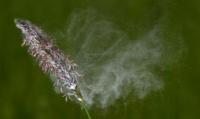
Record-setting rainfall this spring has created an explosion of plant life that has pushed the pollen count to oppressive levels.
Warmer Artic Spells Colder Winters
Age Level: K-2
Key Term: Artic, Sea Ice, Polar Regions, North Pole, Icebergs, Winter, Ice Melt
Story Type: In the News
Topic: Climate & Weather, Water, Geography
The Arctic is moving into "a new climate state" and a return to previous Arctic conditions is "unlikely," according to a new assesment from the National Oceanic and Atmospheric Administration. One consequence of a warmer Arctic could be colder winters in other parts of the Northern Hemisphere.
The basic facts have been reported widely and often:
The area covered by sea ice hovered near its historic low this summer. In Greenland, record-high temperatures this year have helped accelerate the melting of the country's massive ice sheet. Throughout the Arctic, permafrost is warming and the blanket of snow is shrinking. Those changes appear to be long-lasting, said an international team of climate experts who wrote the National Oceanic and Atmospheric Administration report. [...] "The Arctic is a system, and the system is changing," said Don Perovich, a sea ice expert with the U.S. Army Corps of Engineers who worked on the report. "It's not just that sea ice is being reduced. There's changes in Greenland, the atmosphere, the ecosystem, and these changes are affecting human activity."
What is increasingly apparent, as researchers have warned for years, is that "polar amplification" is causing many of these changes to feed on themselves, amplifying each other year after year. In this regard, what is happening to Arctic sea ice is in many ways key.
As the National Snow and Ice Data Center (NSIDC) pointed out earlier this month, Arctic sea ice is not just diminishing in extent -- the four lowest levels have been in the last four years -- but it is also younger and thinner. That makes ice easier to melt each year, which in turn exposes greater areas of heat-trapping ocean, which causes further melting, making it more and more difficult for sea ice to recover to previous levels.
10 Hottest Species
Age Level: K-2
Key Term: Endangered Species
Story Type: In the News

"America’s Hottest Species," a report produced by the Endangered Species Coalition, provides information on 10 of the top endangered wildlife, fish and plants experiencing the impacts of climate change.
The list includes species or groups of related species that are listed as threatened or endangered under the Federal Endangered Species Act or are candidates for listing.
Climate change threatens these species through habitat reduction, increases in disease and lowering of reproduction.
The species making the list were:
1. Kauai Creeper or ‘Akikiki
2. Elkhorn Coral
3. Bull Trout
4. Canada Lynx
5. Pacific Salmon
6. Leatherback Sea Turtle
7. Grizzly Bear
8. Bog Turtle
9. Western Prairie Fringed Orchid
10. Flatwoods Salamander
In addition, the Endangered Species Coalition conducted an online poll earlier this year to determine which species their audience thought was most threatened. The winner: polar bear.
Read the full news article or view the report
China launches armada to head off algae plume
Age Level: K-2
Story Type: In the News
Topic: Climate & Weather, Biodiversity/Wildlife, Water, Project-Based Learning
Fertilizer run-off and record high temperatures are causing unprecedented outbreaks of algae- known as the green tide- off the coast of Qingdao, China. Clean up crews are now scrubbing an area of about 150 mi sq.
Whooping cranes to be reintroduced in Louisiana

Ten whooping cranes, the most endangered species of crane in the world, will be reintroduced in a Louisiana conservation area more than 60 years after the birds' numbers dwindled to near zero, the U.S. Interior Department said on Tuesday.
Photo Credit: USFWS
The Greening of Environmental Ed
Key Term: Environmental Education
Story Type: In the News

Teachers focus on complexity, evidence, and letting students draw their own conclusions.
Serengeti Road Plan Offers Prospects and Fears
Age Level: K-2
Key Term: Wildlife, Serengeti, Savanna, Migration, Prairie, Africa, Tanzania, Maasai, Ecotourism
Story Type: In the News
Topic: Geography
SERENGETI NATIONAL PARK, Tanzania - Every spring, out here on this endless sheet of yellow grass, two million wildebeest, zebras, gazelles and other grazers march north in search of greener pastures, with lions and hyenas stalking them and vultures circling above.
It is called the Great Migration, and it is widely considered one of the most spectacular assemblies of animal life on the planet.
But how much longer it will stay that way is another matter. Tanzania's president, Jakaya Kikwete, plans to build a national highway straight through the Serengeti park, bisecting the migration route and possibly sending a thick stream of overloaded trucks and speeding buses through the traveling herds.
Scientists and conservation groups paint a grim picture of what could happen next: rare animals like rhinos getting knocked down as roadkill; fences going up; invasive seeds sticking to car tires and being spread throughout the park; the migration getting blocked and the entire ecosystem becoming irreversibly damaged.
"The Serengeti ecosystem is one of the wonders of the planet," said Anne Pusey, an evolutionary anthropologist at Duke University. "It must be preserved."
But it is election time in Tanzania, one of the poorest countries in the world, and Mr. Kikwete is embroiled in what political analysts say is the feistiest presidential race this country has seen.
Waves Power Delivers Electricity to US Grid for First Time
Age Level: K-2
Key Term: Renewable Energy, Hawaii
Story Type: In the News
Topic: Climate & Weather, Water, Energy, Geography, STEM, Gardening
While wave power often seems like the poor cousin of the renewable energy world, and frankly doesn't have the practical potential of wind or solar power, tapping the power of the sea does have its place and this next one is worth a bit of hand clapping: One of Ocean Power Technologies' PowerBuoys can claim to be the first wave power device to deliver electricity to the US grid.
Monarch butterfly count bounces back from bad year
Story Type: In the News
Topic: Climate & Weather, Biodiversity/Wildlife, Geography, Environmental Health

Monarch butterfly colonies in Mexico more than doubled in size this winter after bad storms devastated their numbers a year ago, conservationists said on Monday although the migrating insect remains under threat.
Millions of butterflies make a 2,000-mile journey each year from Canada to winter in central Mexico's warmer weather but the size of that migration can vary wildly.
Fewer of the orange and black insects arrived in Mexico last year than ever before, researchers said, but the butterfly colonies increased by 109 percent this year to cover roughly 10 acres of forest. Researchers estimate the size of the butterfly colonies based on the area they occupy in a forest.
Photo Credit: monarch-butterfly.info
Giant Lizard Is A New Species, Scientists Say

Researchers have concluded that a giant, golden-spotted monitor lizard discovered in the forested mountains of the Philippines six years ago is a new species, according to a study released Wednesday.
The 6.5-foot-long lizard was first spotted in 2004 in the Sierra Madre mountains on the main island of Luzon when local researchers saw local Agta tribesmen carrying one of the dead reptiles.
But it took until last year to determine it was a new species. After capturing an adult, researchers from the University of Kansas and the National Museum of the Philippines obtained DNA samples that helped confirm the lizard was new to science.
Read full article
Mexican salamander helps uncover mysteries of stem cells and evolution
Age Level: K-2
Key Term: Stem cells, Health
Story Type: In the News
Topic: Water, Environmental Health
Dr Andrew Johnson is speaking today (12 July) at the UK National Stem Cell Network annual conference. He and his team from the University of Nottingham have been using a Mexican aquatic salamander called an axolotl to study the evolution and genetics of stem cells – research that supports the development of regenerative medicine to treat the consequences of disease and injury using stem cell therapies.
Molecular Data and Images from Space Used to Study Imperiled Coastal Dolphins

Using DNA samples and images from Earth-orbiting satellites, conservationists from Columbia University, the Wildlife Conservation Society, the American Museum of Natural History, and Fundación AquaMarina, are gathering new insights about the franciscana -- a poorly known coastal dolphin species of eastern South America -- in an effort to understand populations and conserve them.
The study, one of the first to combine molecular data along with range-wide environmental information for a marine species, is helping researchers to understand how seemingly monotonous marine environments actually contain significant habitat differences that are shaping populations of this threatened species, which averages between 5-6 feet in length and around 80-90 pounds in weight. According to findings published in the most recent edition of Molecular Ecology, genetic differences between dolphins from different sites correlate to measurable differences in water temperature, turbidity and chlorophyll levels, a tantalizing indication of how largely hidden oceanographic variables could drive population structure of marine animals.
The Mystery of Mangroves
Age Level: K-2
Key Term: Floods, Hurricanes
Story Type: In the News
Topic: Climate & Weather, Water, Geography
There are more than 70 species of mangrove trees and shrubs. The best known, such as the red mangrove, are highly adapted to an amphibious lifestyle: Their roots shield them from salt intrusion, and their waxy leaves prevent the loss of precious freshwater.
Despite all this, mangroves are one of the most endangered ecosystems on the planet; they are cleared to make way for rice paddies and shrimp ponds in some areas and for condominiums and subdivisions in others. All told, humans have destroyed 20 percent of their global extent since 1980.
Grizzly bear enjoy the good life as they move closer to human settlement
Age Level: K-2
Key Term: Threatened Species, Grizzly Bear, Montana, Wyoming, Yellowstone, Wildlife Encounter, Pine Beetle
Story Type: In the News
Topic: Geography
Magnificent and wild, the grizzly bear of the American west has a fearsome reputation. But as a population boom forces them from their deep wilderness habitat of the Rocky Mountains, their increasingly close encounters with humans are altering their lifestyles, making them lazy and fat, conservation experts say.
"We've got bears spending the whole summer eating oats in the field, out there with the elk and the deer, and getting fatter and fatter," said Jamie Jonkel, a grizzly manager and wildlife conflict specialist with Montana Fish, Wildlife, and Parks, the state government's conservation agency.
"They've started really loving the good life, much like the average American," said Jonkel, who led a tour of reporters from the Society for Envornmental Journalists.
"Some of them still move into the high country in the summer, but some of them just set up shop and don't move. You can see grizzlies out there in the fields all day lazing about grazing on alfafa while a kid is kicking a soccer ball around," he said.
A recent census by scientific agencies put the grizzly population in Yellowstone national park and surrounding areas of Wyoming, Montana and Idaho at 603.
That is more than three times the population in 1975 when hunting was outlawed, and grizzlies were protected as an endangered species. Wildlife experts suspect it could be even higher.
The population rise has put pressure on the grizzlies' food source in high wilderness areas. So too has a beetle infestation which has killed off huge swaths of pine across the Rockies, and with them the pine nuts that the grizzlies rely on in late summer and autumn.
School kids help with turtle research project in Forest Park
Age Level: K-2, 3-5, 6-8, 9-12
Story Type: In the News
Topic: Biodiversity/Wildlife
St. Louis, Mo. — Turtles can teach us a lot about our environment, say researchers at the St. Louis Zoo who are tracking the reptiles who live inside Forest Park.
Ten turtles in Forest Park that have been fitted with tracking devices will be studied for their movements and health status. Another 10 turtles at Washington University's Tyson Research Center in rural St. Louis County will also be monitored as a comparison.
Fifth- and sixth-grade students from the eco club at South City Prepatory Academy were on hand Wednesday to help researchers track down the turtles in Forest Park. The students used tracking devices as they marched through the woods and then watched as scientists measured and weighed the turtles.
The students were participating in the zoo's outreach efforts to introduce city kids to nature and animal habitats.
Photo credit: Laurie Skrivan
Read the story at STLtoday.com.
Outdoors and Out of Reach, Studying the Brain
Key Term: Attention, Pyschology
Story Type: In the News
Topic: Environmental Health
GLEN CANYON NATIONAL RECREATION AREA, Utah — Todd Braver emerges from a tent nestled against the canyon wall. He has a slight tan, except for a slim pale band around his wrist. For the first time in three days in the wilderness, Mr. Braver is not wearing his watch. “I forgot,” he says.
It is a small thing, the kind of change many vacationers notice in themselves as they unwind and lose track of time. But for Mr. Braver and his companions, these moments lead to a question: What is happening to our brains?
Six Rules for Eco-friendly Gardening
Story Type: In the News
Topic: Climate & Weather, Water, Energy, Geography, Environmental Health, Green Schools, STEM

Think about the millions of tons of waste materials that are hauled away, buried or burned each day from landscaping and groundskeeping operations. This includes trees, shrubs, brush, lumber, asphalt and concrete, just to name a few.
Also, consider the millions of gallons of water, pesticides, fertilizers and fuels used to keep gardens, yards and landscapes healthy, lush and green. The costs of these materials — both economic and environmental — can easily be reduced or eliminated with updated landscaping methods.
Click here to view some green landscaping elements you can use in your daily gardening routine and do your part for the planet.
Photo Credit: Mother Nature Network
First wild polar-grizzly bear hybrid offspring discovered

It's official: polar bears and grizzlies are interbreeding in the wild - and so are their offspring, according to DNA tests cited by TheStar.com. The offspring of a female polar-grizzly bear was discovered this month in Canada, proving that there are more of these hybrid animals in existence than the previously confirmed 17 located in zoos.
Another beaver makes Bronx River home- doubles the total beaver population
Age Level: K-2
Key Term: Wildlife, New York City, Pelts, Habitat Restoration
Story Type: In the News
Topic: Water, Geography
Hot dam! The first beaver found in the city in 200 years finally has company after three years of solitude on the Bronx River.
A beaver named Jose is now sharing his life with another buck-toothed mammal - but the relationship is unclear.
"A companion, a friend, a mate, an associate - we don't know what it is," said Rep. Jose Serrano, for whom the first beaver was named after its discovery in 2007.
Solar Boat Race Teaches Students Green-Energy Science
Age Level: K-2
Key Term: Renewable Energy, Solar Power, Boating Competition, Canoes
Story Type: In the News
Topic: Water, Energy, Service-Learning, STEM, Gardening
The country’s largest solar-powered boat competition got underway last Friday in California. 700 Southern California students from 42 schools began the seven-month long process to see who will be crowned winner of the Solar Cup Competition in May of 2011.
“We started Solar Cup nine years ago to promote clean recreation on our drinking-water reservoirs and to increase educational outreach to high-school students,” said Solar Cup Coordinator Julie Miller. “The competition has now evolved into a great opportunity for kids to learn about green technology and alternative energy sources. Solar Cup also promotes career development in clean energy, by encouraging kids to consider careers in engineering, construction, or as solar techs.”
All 42 student teams begin by assembling the same boat—identical canoe hulls made of marine-grade plywood. Roughly half of participating students gathered to build their boats Friday with the remaining teams scheduled to meet and assemble on Nov. 13.
Once the boats are assembled, students return to school and work for the next seven months outfitting the boats with solar panels, batteries, lights, rudders and steering systems—and, in some cases, snazzy paint jobs.
Student teams will reconvene at Lake Skinner in Temecula Valley on May 13 – 15, 2011, for the Solar Cup Competition.
Empire States Building Goes Green, one building at a time
Key Term: Windows, Green Buildings, Efficiency
Story Type: In the News
Topic: Climate & Weather, Energy, Waste Management/Recycling
You want to ask him: How many do you break?
That's because Anthony Concepcion does windows- lots of windows.
He's working at the Empire State Building. As part of an effort to become certifiably green, the office tower is removing, retrofitting and replacing each of its 6,514 double-hung, dual-pane windows. That's 26,056 panes of glass.
Gulf Oil Plume is not Breaking Down Fast, Study Says
Age Level: K-2
Key Term: Oil Spill, Gulf of Mexico
Story Type: In the News
Topic: Water, Energy, Environmental Health, Project-Based Learning
New research confirms the existence of a huge plume of dispersed oil deep in the Gulf of Mexico and suggests that it has not broken down rapidly, raising the possibility that it might pose a threat to wildlife for months or even years.
The study, the most ambitious scientific paper to emerge so far from the Deepwater Horizon spill, casts some doubt on recent statements by the federal government that oil in the gulf appears to be dissipating at a brisk clip. However, the lead scientist in the research, Richard Camilli, cautioned that the samples were taken in June and circumstances could have changed in the last two months.
Solar energy making a return to White House
Age Level: K-2
Key Term: Renewable Energy, Solar energy, President
Story Type: In the News
Topic: Climate & Weather, Energy, STEM, Gardening
The White House is going solar after all - a home improvement that carries modest energy benefits but much larger symbolic importance.
It isn't the first time the White House has used solar energy. President Jimmy Carter put 32 solar panels on the roof in the late 1970s, but President Ronald Reagan removed them in 1986. Two grass-roots campaigns have recently been lobbying President Obama to restore them as a sign of his commitment to renewable energy.
Roman Decadence and Rising Seas
Age Level: K-2
Key Term: Roman Empire, Italy, Feasts, Fish Tank
Story Type: In the News
Topic: Climate & Weather, Water, Energy, Geography

Sea level is rising in relation to many of the world’s shorelines, and has been for decades. The main reason is that the volume of the ocean is increasing as a result of the melting of land ice and the warming of the sea itself. (Warm water expands, just as warm air does.)
Scientists once thought this volume increase had been going on, in fits and starts, for thousands of years. This widespread belief was often used as a debating point by climate-change skeptics, who argued that sea-level rise was nothing to worry about because it had existed throughout the history of human civilization.
But research in recent years has turned that notion on its head. The matter is not entirely settled, but some persuasive evidence points to the conclusion that the volume of the ocean was fairly stable for the last 2,000 years and began rising only recently, more or less in sync with industrialization. This is important because it suggests that sea level might be pretty sensitive to the greenhouse gases that humans are dumping into the atmosphere.
I made a brief mention of this issue in a long article on Sunday on sea-level rise but did not have the space to go into much detail. Here is some of the background:
Archaeological discoveries that shed light on ancient sea level are prized finds for the experts in this field. One of the most compelling studies of recent years was carried out by an Australian scientist named Kurt Lambeck, who worked with colleagues in Italy. They focused on ancient fish tanks built at the edge of the Mediterranean by the Romans over the 300 years when their civilization was at its height, ending in the second century A.D.
These tanks were sometimes decorative, but mostly they were used as storage pens to keep fish fresh for the lavish banquets that wealthy Romans held in their seaside villas. The tanks, described in some detail by Roman historians, have long fired the imaginations of classicists, since they represent Roman civilization at its decadent height. The tanks made an appearance in the popular Robert Harris novel Pompeii, for instance.
The Coral Pulse of Life
Story Type: In the News
Topic: Climate & Weather, Water, Geography, STEM, Project-Based Learning

Corals are marine organisms living in compact colonies of many identical individual polyps. The group includes the important reef builders that inhabit tropical oceans, which secrete calcium carbonate to form a hard skeleton. Coral reefs form some of the most diverse ecosystems on Earth.
They occupy less than one tenth of one percent of the world ocean surface, yet they provide a home for about twenty-five percent of all marine species, including fish, molluscs, worms, and crustaceans. Paradoxically, coral reefs flourish even though they are often surrounded by ocean waters that provide few nutrients. University of Miami (UM) Rosenstiel School of Marine & Atmospheric Science scientist Chris Langdon and colleagues have developed a new tool to monitor coral reef vital signs. By accurately measuring their biological pulse, scientists can better assess how climate change and other ecological threats impact coral reef health worldwide.
Read the rest of the article here.
Photo Credit: Coral Reef Info
Working at the park, teacher rangers share knowledge at Hoover site
Age Level: K-2
Key Term: National Parks
Story Type: In the News
Topic: Geography, Service-Learning
WEST BRANCH -- Dan Stevenson stood in the back of the cottage where Iowa native and future President Herbert Hoover was born in August 1874.
He explained to visitors how Hoover's father, Jesse Hoover, built the two-room cottage in 1871 for him, his wife, Hulda, and their oldest child, Theodore.
It is a job that Stevenson, an eighth-grade American history teacher at West Liberty Middle School, said appealed to his love of history.
Canada's Lost Salmon Return in Droves
Age Level: K-2
Key Term: Spawning, Salmon
Story Type: In the News
Topic: Water, Geography, Project-Based Learning
Every year, sockeye salmon return to the rivers of western Canada to make their arduous upstream journey to calmer spawning grounds. It is a seasonal touchstone that signifies the approaching end of summer, one that has been observed for centuries.
The only problem is that some years, like in 2009, the salmon don't return.
Offshore Wind Power Line Wins Backing
Age Level: K-2
Key Term: Renewable Energy, oceans, Wind Power, Turbines, East Coast, Mid-Atlantic
Story Type: In the News
Topic: Climate & Weather, Water, Energy, Geography, STEM, Gardening
WASHINGTON — Google and a New York financial firm have each agreed to invest heavily in a proposed $5 billion transmission backbone for future offshore wind farms along the Atlantic Seaboard that could ultimately transform the region’s electrical map.
The 350-mile underwater spine, which could remove some critical obstacles to wind power development, has stirred excitement among investors, government officials and environmentalists who have been briefed on it.
Forests Expand in Europe, North America and Central Asia
Age Level: K-2
Story Type: In the News
Topic: Climate & Weather, Biodiversity/Wildlife, Water, Oceans, Energy, Geography, STEM, Project-Based Learning

Forests in Europe, North America, the Caucasus, and Central Asia have expanded steadily over the last two decades, increasing by more than 25 million hectares — an area slightly larger than the United Kingdom — since 1990, a UN report says. In Europe alone, forested areas increased by 17 million hectares from 1990 to 2010, with the volume of forests growing by more than 430 million cubic meters annually, according to the Global Forest Resource Assessment 2010.
Read the rest of the article here.
Photo Credits: Nicholas T/flickr/Creative Commons
Risk Taking Rises as Oil Rigs in Gulf Drill Deeper
Key Term: Gulf of Mexico, Deep sea drilling, Petroluem
Story Type: In the News
Topic: Water, Energy, Geography, Environmental Health, Project-Based Learning, Gardening
In a remote reach of the Gulf of Mexico, nearly 200 miles from shore, a floating oil platform thrusts its tentacles deep into the ocean like a giant steel octopus.
The $3 billion rig, called Perdido, can pump oil from dozens of wells nearly two miles under the sea while simultaneously drilling new ones. It is part of a wave of ultra-deep platforms — all far more sophisticated than the rig that was used to drill the ill-fated BP well that blew up in April. These platforms have sprung up far from shore and have pushed the frontiers of technology in the gulf, a region that now accounts for a quarter of the nation’s oil output.
For Eagles, a Winning Mix of Wind, Biodiesel and Solar
Age Level: K-2
Key Term: Renewable Energy, Los Angeles, Sports facilities, Sports, Football, Stadium, Lincoln Financial Field, Philadelphia, Seattle, Portland, Meadowlands, St. Louis
Story Type: In the News
Topic: Energy, Geography, Project-Based Learning, Waste Management/Recycling
Sports arenas and stadiums are all about getting the most number of people to spend the maximum amount of money in the shortest amount of time possible. But a growing number of sports buildings from Boston to Los Angeles are becoming efficient in other ways, by saving energy and reducing waste with solar panels, low-flush toilets and composting.
On Thursday, the Philadelphia Eagles will announce perhaps the most ambitious green initiative yet: the installation of about 2,500 solar panels, 80 20-foot-high wind turbines and a generator that runs on natural gas and biodiesel so that Lincoln Financial Field, the Eagles’ home, will be the first stadium capable of generating all its own electricity.
Becoming self-sufficient in energy is the latest in a string of environmentally friendly measures the Eagles have taken since they opened their stadium in 2003. (Coincidentally, the team’s primary color is green.) Since then, many teams have introduced similar efficiency programs, and the four major sports leagues have set up programs to help their teams share information about how to use less energy, reduce waste and save money.
Bridges Built to Help Borneo Orangutan Meet Mates
Age Level: K-2
Key Term: Endangered Species, Extinction, Orangutan, Indonesia, Primate, Ape, Palm Oil
Story Type: In the News
Topic: Biodiversity/Wildlife, Geography
KUALA LUMPUR, Malaysia – Endangered orangutans on Borneo island are using fire hoses slung across rivers by humans to help them move around isolated forests to potentially meet new mates and boost the species' chances for survival, an environmental group said Monday.
Malaysian authorities are building more of the makeshift bridges after some orangutans were spotted using them over the past year, said Marc Ancrenaz, co-founder of French-based conservation group Hutan, which is working with Malaysian state wildlife department officials on orangutan protection.
Conservationists estimate about 11,000 orangutans live in Malaysia's Sabah state in Borneo, but many are isolated from each other because swaths of forest have been cut for development, logging and oil palm plantations.
Environmental groups and wildlife authorities have been hooking up old fire hoses strung together between trees on different sides of rivers to help orangutans — which cannot swim — swing or walk across them. The first bridge was set up seven years ago, but it was only last year that an orangutan was captured on camera using one of them.
Witnesses have seen others doing so since then, prompting officials to build more bridges.
"It takes a while for the animals to get used to it. ... If we are not able to reconnect them, they will go extinct very soon," Ancrenaz said.
Thousands of birds mysteriously fall from sky
Age Level: K-2
Key Term: Wildlife, Birds
Story Type: In the News
Topic: Environmental Health

Thousands of dead birds suddenly drop out of the sky in Arkansas, all within a mile of one another.
Colossal Sea Creature Photos

The world’s largest creatures reside in the ocean, and its depths are home to unusual species whose surprising proportions are unknown on land.
Here, an underwater view captures the billowing tentacles of a lion’s mane jellyfish. The most potent species of jellyfish, the lion’s mane can reach a diameter of 6.6 feet (2 meters) with tentacles topping 49 feet (15 meters).
Terra-Gen Power Breaks Ground on World's Largest Wind Project
Age Level: K-2
Key Term: Renewable Energy, Wind Power, Mojave
Story Type: In the News
Topic: Climate & Weather, Energy, Gardening
MOJAVE, Calif.--(BUSINESS WIRE)--Today, political and business leaders joined Terra-Gen Power for the groundbreaking of the world’s largest wind energy project, the Alta Wind Energy Center (AWEC). When completed, AWEC will have the capacity to generate 1,550 megawatts of clean renewable energy— nearly double the capacity of the largest existing wind energy project and enough to supply power to 1.1 million people, or the equivalent of 275,000 homes.
Green jobs come to the urban poor
Key Term: Los Angeles, Solar panels
Story Type: In the News
Topic: Climate & Weather, Energy, Service-Learning
Many of Los Angeles's urban poor have bigger concerns than climate change. Nonetheless, the past few years have seen formerly homeless and jobless folks planting gardens, installing solar panels, and working other green jobs as they make upgrades to increase the efficiency of their homes. According to an article in the L.A. Times, green job programming, particularly green construction, is helping scores of citizens get back on their feet while helping to build a more sustainable community.
Top 10 Green Reads of the Last 10 Years
Story Type: In the News
Topic: Climate & Weather, Biodiversity/Wildlife, Water, Energy, Geography, Environmental Health, Service-Learning, STEM, Project-Based Learning, Gardening, Waste Management/Recycling
The publication of Silent Spring in 1962 is widely considered to be the birth of the modern environmental movement. Since those early roots took hold, a series of seminal books have contributed to its growth and branched the discourse.
For 50 years, environmental writing has played an important role in defining and redefining the most pressing problems of the day—as well as offering solutions.
The last 10 years, of course, have been no different. In fact, during the past decade science and environmental writers produced a number of works that have become instant classics.
Photo Credit: Bill McKibben
Certainly, no environmental reading list would be complete without these top 10 green reads of the last 10 years:
10. Cradle 2 Cradle
Architect William McDonough and chemist Michael Braungart's book, Cradle to Cradle, is a manifesto in ecologically intelligent design.
Published in 2002, the book proposes replacing the antiquated design processes of the Industrial Revolution with one that's in harmony with nature.
Photo Credit: William McDonough and Michael Braungart
Check out the rest of the top 10 here.
10 surprisingly easy sources of alternative energy
Story Type: In the News
Topic: Energy
Sure, you've heard of wind and solar power, biofuels, hydroelectric, tidal and wave power, but Mother Nature provides an endless bounty of alternative energy sources beyond those that we use today.
Sculpture designed to provoke thought about water
Age Level: K-2
Key Term: Environmental Issues, Legislation, Water Conservation, Floods and Drought, Geography
Story Type: In the News
Topic: Water, Geography

The newly developed CityCenter community in Las Vegas, Nev. recently added a piece of environmental art to its fine art collection. The 87-foot long, 3,700 pound sculpture hangs horizontally from steel cables above a registration desk. The sculpture depicts the Colorado River, complete with its meanders and swells at Lake Powell and Lake Mead. The sculpture was also made with environmentally conscious materials, being cast in reclaimed silver. It is aptly named "Silver River."
The sculpture’s artist, Maya Lin, reflects on her work by saying "Water is going to become more and more of a debate. I’m asking people to take a look at the natural world around them." Las Vegas’ major source of water is the Colorado River and with increasing droughts and demands for water, there is substantial concern that there will not be enough water to sustain the city in coming years.
This infusion of art and environmental consciousness is one of Lin’s trademarks. Growing up in Athens, Ohio during the 1970s, she was exposed to environmental issues at an early age. In 1969, the Cuyahoga River, located in Ohio, caught on fire as a result of its heavily polluted waters. This initiated a massive public response, making Ohio the focal point of national environmental awareness and legislation that would follow. In addition to her artistic pursuits, Lin also sits on the board of the Natural Resources Defense Council.
Her other environmental projects include "Storm King Wavefield," an environmental reclamation project at the site of a former gravel pit in Mountainville, N.Y. For this project she created waves in a field by forming earth and grass mounds. Her more recent work, "What is Missing," is a multisite international project that focuses on habitats and species that are extinct or disappearing and provides information on ways to help protect the environment. The main element of the project is a giant megaphone that plays the sounds of endangered species.
Related Resources:
Using the Landscape to Create Works of Art (Visual Arts, The Arts)
Fractals in Nature and Art (Visual Arts, The Arts, Geometry, Algebra I, Mathematics)
Representations of the Natural World in Art (Visual Arts, The Arts, Social Studies, Language Arts)
Photo: Sam Morris, Las Vegas Sun
Forgot to turn off the lights? There's an app for that
Story Type: In the News
Topic: Energy, Gardening

Zerofootprint's TalkingPlug device turns everyday electrical outlets into miniature communications hubs, allowing remote monitoring and control of energy use by smartphone. Think of it as two more prongs in the coming smart grid revolution.
Oceans choking on CO2, study says
Age Level: K-2
Story Type: In the News
Topic: Climate & Weather, Water, Energy, Environmental Health, Project-Based Learning

SYDNEY - The world's oceans are virtually choking on rising greenhouse gases, destroying marine ecosystems and breaking down the food chain -- irreversible changes that have not occurred for several million years, a new study says.
The changes could have dire consequences for hundreds of millions of people around the globe who rely on oceans for their livelihoods.
"It's as if the Earth has been smoking two packs of cigarettes a day", said the report's lead-author Australian marine scientist Professor Ove Hoegh-Guldberg.
Six Department of Energy Projects You've Never Heard of But Should
Age Level: K-2
Key Term: Renewable Energy, Department of Energy, Federal Government, Energy Research
Story Type: In the News
Topic: Climate & Weather, Water, Energy, Geography, STEM, Gardening

Rachel Cernansly of Planet Green reports-
For all its weaknesses and criticisms, DOE is doing some great stuff to encourage a clean energy future.
National Geothermal Student Competition
Launched yesterday, this competition challenges students to "conduct extensive research on the geothermal energy potential of the Rio Grande Rift geologic province located in southeastern Colorado and northeastern New Mexico."
It's meant to stimulate geothermal technology development—along with funding of other geothermal technologies—as well as increase geothermal education.
DOE will award as much as $100,000 to up to 10 college teams, which will have to use their research to produce data assessing the geologic, engineering, environmental, land use, policy, and cultural issues that all must be addressed as part of geothermal development in the U.S.
Clean Energy for Small Businesses
DOE announced $57 million last month to support commercialization of clean energy technologies for 33 small businesses in 16 states. The projects, led by small businesses, are partnerships with universities, national labs, and large businesses, and include developing technologies like a biodiesel from algae in Tennessee to self-erecting wind turbines that can be manufactured on site.
Energy efficiency in the federal government
DOE awarded 31 individuals or teams across the federal government for improving energy, water, and/or vehicle fleet efficiency—initiatives that DOE says collectively saved taxpayers nearly $42 million in one year alone, and saved the equivalent of 190,000 tons of CO2 emissions. Energy Secretary Steven Chu recognizes the symbolic significance of this. He said, "As the single largest consumer of energy in the country, the federal government has a responsibility and an opportunity to lead by example in implementing clean energy projects that save taxpayers money, create new jobs, and reduce carbon pollution."
10 surprisingly easy sources of alternative energy
Story Type: In the News
Topic: Energy
Sure, you've heard of wind and solar power, biofuels, hydroelectric, tidal and wave power, but Mother Nature provides an endless bounty of alternative energy sources beyond those that we use today.
Drought in Australia Food Bowl Worsens

Drought in Australia's main food growing region of the Murray-Darling river system has worsened, with water inflows over the past two years at an all-time low, the government's top water official said on Tuesday. The drought will hit irrigated crops such as rice, grapes and horticulture the hardest, but would have less impact on output of wheat, which depends largely on rainfall during specific periods and is on track to double after two years of shrunken crops.
Curricula Links:
Economics and Drought (Economics)
Understanding Droughts (World History, U.S. History, Geography)
Cultural Characteristics Influence a Region's Character (Geography, Economics, Science)
Sculpture designed to provoke thought about water
Age Level: K-2
Key Term: Environmental Issues, Legislation, Water Conservation, Floods and Drought, Geography
Story Type: In the News
Topic: Water, Geography

The newly developed CityCenter community in Las Vegas, Nev. recently added a piece of environmental art to its fine art collection. The 87-foot long, 3,700 pound sculpture hangs horizontally from steel cables above a registration desk. The sculpture depicts the Colorado River, complete with its meanders and swells at Lake Powell and Lake Mead. The sculpture was also made with environmentally conscious materials, being cast in reclaimed silver. It is aptly named "Silver River."
The sculpture’s artist, Maya Lin, reflects on her work by saying "Water is going to become more and more of a debate. I’m asking people to take a look at the natural world around them." Las Vegas’ major source of water is the Colorado River and with increasing droughts and demands for water, there is substantial concern that there will not be enough water to sustain the city in coming years.
This infusion of art and environmental consciousness is one of Lin’s trademarks. Growing up in Athens, Ohio during the 1970s, she was exposed to environmental issues at an early age. In 1969, the Cuyahoga River, located in Ohio, caught on fire as a result of its heavily polluted waters. This initiated a massive public response, making Ohio the focal point of national environmental awareness and legislation that would follow. In addition to her artistic pursuits, Lin also sits on the board of the Natural Resources Defense Council.
Her other environmental projects include "Storm King Wavefield," an environmental reclamation project at the site of a former gravel pit in Mountainville, N.Y. For this project she created waves in a field by forming earth and grass mounds. Her more recent work, "What is Missing," is a multisite international project that focuses on habitats and species that are extinct or disappearing and provides information on ways to help protect the environment. The main element of the project is a giant megaphone that plays the sounds of endangered species.
Related Resources:
Using the Landscape to Create Works of Art (Visual Arts, The Arts)
Fractals in Nature and Art (Visual Arts, The Arts, Geometry, Algebra I, Mathematics)
Representations of the Natural World in Art (Visual Arts, The Arts, Social Studies, Language Arts)
Photo: Sam Morris, Las Vegas Sun
Six Department of Energy Projects You've Never Heard of But Should
Age Level: K-2
Key Term: Renewable Energy, Department of Energy, Federal Government, Energy Research
Story Type: In the News
Topic: Climate & Weather, Water, Energy, Geography, STEM, Gardening

Rachel Cernansly of Planet Green reports-
For all its weaknesses and criticisms, DOE is doing some great stuff to encourage a clean energy future.
National Geothermal Student Competition
Launched yesterday, this competition challenges students to "conduct extensive research on the geothermal energy potential of the Rio Grande Rift geologic province located in southeastern Colorado and northeastern New Mexico."
It's meant to stimulate geothermal technology development—along with funding of other geothermal technologies—as well as increase geothermal education.
DOE will award as much as $100,000 to up to 10 college teams, which will have to use their research to produce data assessing the geologic, engineering, environmental, land use, policy, and cultural issues that all must be addressed as part of geothermal development in the U.S.
Clean Energy for Small Businesses
DOE announced $57 million last month to support commercialization of clean energy technologies for 33 small businesses in 16 states. The projects, led by small businesses, are partnerships with universities, national labs, and large businesses, and include developing technologies like a biodiesel from algae in Tennessee to self-erecting wind turbines that can be manufactured on site.
Energy efficiency in the federal government
DOE awarded 31 individuals or teams across the federal government for improving energy, water, and/or vehicle fleet efficiency—initiatives that DOE says collectively saved taxpayers nearly $42 million in one year alone, and saved the equivalent of 190,000 tons of CO2 emissions. Energy Secretary Steven Chu recognizes the symbolic significance of this. He said, "As the single largest consumer of energy in the country, the federal government has a responsibility and an opportunity to lead by example in implementing clean energy projects that save taxpayers money, create new jobs, and reduce carbon pollution."
DOE awards $76 million to green building projects
Age Level: K-2
Story Type: In the News
Topic: Energy
Recovery Act awards from the DOE continue with the announcement of $76 million in funding for green building projects.
A Hole In The Ocean To Store Energy
Age Level: K-2
Story Type: In the News
Topic: Water, Energy, Geography

Imagine you’re looking for treasure on a small island in the middle of an ocean. The highest elevation on the island is just above sea level, which is rising because of global warming. (You’d rather not see that happen.)
Curricula Links:
The Great Energy Debate (Geography, Science, Language Arts, Math)
Underwater Windmill Helps Power Artic Village (Geography, Science)
Energy: The U.S. in Crisis? (U.S. History, Science)
Top 10 Green Reads of the Last 10 Years
Story Type: In the News
Topic: Climate & Weather, Biodiversity/Wildlife, Water, Energy, Geography, Environmental Health, Service-Learning, STEM, Project-Based Learning, Gardening, Waste Management/Recycling
The publication of Silent Spring in 1962 is widely considered to be the birth of the modern environmental movement. Since those early roots took hold, a series of seminal books have contributed to its growth and branched the discourse.
For 50 years, environmental writing has played an important role in defining and redefining the most pressing problems of the day—as well as offering solutions.
The last 10 years, of course, have been no different. In fact, during the past decade science and environmental writers produced a number of works that have become instant classics.
Photo Credit: Bill McKibben
Certainly, no environmental reading list would be complete without these top 10 green reads of the last 10 years:
10. Cradle 2 Cradle
Architect William McDonough and chemist Michael Braungart's book, Cradle to Cradle, is a manifesto in ecologically intelligent design.
Published in 2002, the book proposes replacing the antiquated design processes of the Industrial Revolution with one that's in harmony with nature.
Photo Credit: William McDonough and Michael Braungart
Check out the rest of the top 10 here.
10 Hottest Species
Age Level: K-2
Key Term: Endangered Species
Story Type: In the News

"America’s Hottest Species," a report produced by the Endangered Species Coalition, provides information on 10 of the top endangered wildlife, fish and plants experiencing the impacts of climate change.
The list includes species or groups of related species that are listed as threatened or endangered under the Federal Endangered Species Act or are candidates for listing.
Climate change threatens these species through habitat reduction, increases in disease and lowering of reproduction.
The species making the list were:
1. Kauai Creeper or ‘Akikiki
2. Elkhorn Coral
3. Bull Trout
4. Canada Lynx
5. Pacific Salmon
6. Leatherback Sea Turtle
7. Grizzly Bear
8. Bog Turtle
9. Western Prairie Fringed Orchid
10. Flatwoods Salamander
In addition, the Endangered Species Coalition conducted an online poll earlier this year to determine which species their audience thought was most threatened. The winner: polar bear.
Read the full news article or view the report
Serengeti Road Plan Offers Prospects and Fears
Age Level: K-2
Key Term: Wildlife, Serengeti, Savanna, Migration, Prairie, Africa, Tanzania, Maasai, Ecotourism
Story Type: In the News
Topic: Geography
SERENGETI NATIONAL PARK, Tanzania - Every spring, out here on this endless sheet of yellow grass, two million wildebeest, zebras, gazelles and other grazers march north in search of greener pastures, with lions and hyenas stalking them and vultures circling above.
It is called the Great Migration, and it is widely considered one of the most spectacular assemblies of animal life on the planet.
But how much longer it will stay that way is another matter. Tanzania's president, Jakaya Kikwete, plans to build a national highway straight through the Serengeti park, bisecting the migration route and possibly sending a thick stream of overloaded trucks and speeding buses through the traveling herds.
Scientists and conservation groups paint a grim picture of what could happen next: rare animals like rhinos getting knocked down as roadkill; fences going up; invasive seeds sticking to car tires and being spread throughout the park; the migration getting blocked and the entire ecosystem becoming irreversibly damaged.
"The Serengeti ecosystem is one of the wonders of the planet," said Anne Pusey, an evolutionary anthropologist at Duke University. "It must be preserved."
But it is election time in Tanzania, one of the poorest countries in the world, and Mr. Kikwete is embroiled in what political analysts say is the feistiest presidential race this country has seen.
The Mystery of Mangroves
Age Level: K-2
Key Term: Floods, Hurricanes
Story Type: In the News
Topic: Climate & Weather, Water, Geography
There are more than 70 species of mangrove trees and shrubs. The best known, such as the red mangrove, are highly adapted to an amphibious lifestyle: Their roots shield them from salt intrusion, and their waxy leaves prevent the loss of precious freshwater.
Despite all this, mangroves are one of the most endangered ecosystems on the planet; they are cleared to make way for rice paddies and shrimp ponds in some areas and for condominiums and subdivisions in others. All told, humans have destroyed 20 percent of their global extent since 1980.
The Greening of Environmental Ed
Key Term: Environmental Education
Story Type: In the News

Teachers focus on complexity, evidence, and letting students draw their own conclusions.
World Oceans Day clouded by oil spill
Age Level: K-2
Story Type: In the News
Topic: Biodiversity/Wildlife, Environmental Health

Conservation groups, schools, businesses and governments across the globe are planning events and activities Tuesday to celebrate the world’s oceans, a day of tribute tinged by worry over the impact of a devastating oil spill in the Gulf of Mexico.
The United Nations recognizes June 8 as World Oceans Day. The “holiday” was officially celebrated for the first time last year, though the concept of a day to pay homage to the world’s oceans was first proposed in 1992 by Canada at the Earth Summit in Rio de Janeiro.
Working at the park, teacher rangers share knowledge at Hoover site
Age Level: K-2
Key Term: National Parks
Story Type: In the News
Topic: Geography, Service-Learning
WEST BRANCH -- Dan Stevenson stood in the back of the cottage where Iowa native and future President Herbert Hoover was born in August 1874.
He explained to visitors how Hoover's father, Jesse Hoover, built the two-room cottage in 1871 for him, his wife, Hulda, and their oldest child, Theodore.
It is a job that Stevenson, an eighth-grade American history teacher at West Liberty Middle School, said appealed to his love of history.
Offshore Wind Power Line Wins Backing
Age Level: K-2
Key Term: Renewable Energy, oceans, Wind Power, Turbines, East Coast, Mid-Atlantic
Story Type: In the News
Topic: Climate & Weather, Water, Energy, Geography, STEM, Gardening
WASHINGTON — Google and a New York financial firm have each agreed to invest heavily in a proposed $5 billion transmission backbone for future offshore wind farms along the Atlantic Seaboard that could ultimately transform the region’s electrical map.
The 350-mile underwater spine, which could remove some critical obstacles to wind power development, has stirred excitement among investors, government officials and environmentalists who have been briefed on it.
Switching Gears: More Commuters Bike to Work
Age Level: K-2
Key Term: Health, Bike, Commute, Fitness
Story Type: In the News
Topic: Energy, Geography, Environmental Health
One way National Geographic staffers in Washington, D.C., can get to know their company's CEO is to take him up on his long-standing offer: to go for a lunchtime bike ride.
"Anyone still downstairs? OK, so we ready to go, guys?" National Geographic Society CEO John Fahey asks a group of about 20 employees
Fahey, an avid biker, says he's just trying to encourage a little exercise — and he wants the opportunity to get to know folks informally. As the group makes the 15-mile trek to Hains Point along the Potomac River and back, Fahey makes a point of chatting with everyone, staffers say.
At National Geographic — which is a hub of outdoorsy, adventure-seeking types who think nothing of biking busy city streets — lots of the staffers who join Fahey for the lunchtime rides also use their bikes to get to and from work every day.
"I've been riding in for 19 years," says senior photo editor Dan Westergren, adding that he has definitely noticed the boom — especially as bike paths and bike lanes along city streets have improved.Westergren's commute is a combined 12 miles to and from home. And he says, given all the biking he does, he doesn't need a gym membership to stay fit.
"Really, to build it into your daily routine by commuting for me has just been the best thing," he says.
Reverse auction ineffective at solving Maryland’s crabbing woes

This summer, Maryland tried to address a growing problem in the Chesapeake Bay: there are too few blue crabs and too many licensed watermen. Efforts were directed to a particular set of watermen, the 3,676 individuals holding "limited crab catcher" licenses. A little more than half of the watermen in Maryland hold this kind of license. These watermen are limited to setting up to 50 wire-mesh pots to trap crabs underwater and don’t often make their living off crabbing. Many don’t even take advantage of their licensee privileges. According to the Maryland Department of Natural Resources, therein lies the problem.
When that many crabbers hold licenses, yet do not use them for years, it makes it difficult to forecast each year’s harvest. If those who have not crabbed for years suddenly decide to, it could cause the state to exceed catch limits.
Maryland decided to team with scholars to use modern economic theory to solve this problem. They came up with the idea of a "reverse auction."
In this auction, the state asked crabbers to name their own price for selling their license to the state. The theory behind reverse auctions is that since bidders are not allowed to know what others bid and the buyer has the right to decline bids, bidders will be enticed to bid low. This would allow the state to buy licenses as cheaply as possible.
The state went into the auction hoping to buy 2,000 licenses with money the federal government provided. The auction closed on July 31, with only 494 bids received and over half for $5,000 or more, an offer the state considered too high. One waterman offered his license for $425 million, an obvious act of protest to the auction.
So why were people so reluctant to participate? Some feared they would bid too low and be cheated. Some still make their living on the water. But to many, it is unsellable because it is proof of their identity. It is part of their heritage. It is tradition. In the words of one license holder when asked about selling, "I would feel like a part of me was gone."
The bid outcome forced the state to scrap the auction. The state is now offering to buy licenses at a fixed price of $2,260. Despite the results of the Maryland auction, Virginia is currently trying a reverse auction, with bids due November 1st.
Related Resources:
Stabilizing the World’s Fisheries (Environmental Science, Biology, Economics)
Human Impact on Great Barrier Reef: Overfishing (Environmental Science, Biology)
Oceanographic Specialists (Biology, Earth Science, Chemistry, Physics, Environmental Science
Photo: James A. Parcell, The Washington Post
Gulf oil spill: Animals can't escape the muck
Age Level: K-2
Story Type: In the News
Topic: Environmental Health

The most recent estimates put the rate of the Gulf oil leak at nearly 1 million gallons of oil a day. Oil from the Deepwater Horizon rig explosion has now washed ashore on the coasts of Louisiana, Mississippi, Alabama and Florida, and oil in the Loop Current could travel up the East Coast as far as Cape Hatteras, N.C. More than 400 species are threatened by the spill, and the timing couldn't be worse.
"Freak" Hurricane Ike Will Cost $22 Billion

Hurricane Ike will be entered into the record books for the severe damage it inflicted in and around Galveston, Texas, experts say.
"This one's going to be famous for a long time, if for no other reason than it hit Texas, which hadn't gotten a strike by a damaging hurricane in 25 years," said Jeff Masters, director of Weather Underground, a private commercial forecasting service.
Curricula Links:
Weather Channel Video on Hurricanes (Earth Science)
Historical Data on Number of Hurricanes by Year (History, Mathematics)
Economics During a Hurricane (Economics, U.S. Government)
The Greening of Environmental Ed
Key Term: Environmental Education
Story Type: In the News

Teachers focus on complexity, evidence, and letting students draw their own conclusions.
Sculpture designed to provoke thought about water
Age Level: K-2
Key Term: Environmental Issues, Legislation, Water Conservation, Floods and Drought, Geography
Story Type: In the News
Topic: Water, Geography

The newly developed CityCenter community in Las Vegas, Nev. recently added a piece of environmental art to its fine art collection. The 87-foot long, 3,700 pound sculpture hangs horizontally from steel cables above a registration desk. The sculpture depicts the Colorado River, complete with its meanders and swells at Lake Powell and Lake Mead. The sculpture was also made with environmentally conscious materials, being cast in reclaimed silver. It is aptly named "Silver River."
The sculpture’s artist, Maya Lin, reflects on her work by saying "Water is going to become more and more of a debate. I’m asking people to take a look at the natural world around them." Las Vegas’ major source of water is the Colorado River and with increasing droughts and demands for water, there is substantial concern that there will not be enough water to sustain the city in coming years.
This infusion of art and environmental consciousness is one of Lin’s trademarks. Growing up in Athens, Ohio during the 1970s, she was exposed to environmental issues at an early age. In 1969, the Cuyahoga River, located in Ohio, caught on fire as a result of its heavily polluted waters. This initiated a massive public response, making Ohio the focal point of national environmental awareness and legislation that would follow. In addition to her artistic pursuits, Lin also sits on the board of the Natural Resources Defense Council.
Her other environmental projects include "Storm King Wavefield," an environmental reclamation project at the site of a former gravel pit in Mountainville, N.Y. For this project she created waves in a field by forming earth and grass mounds. Her more recent work, "What is Missing," is a multisite international project that focuses on habitats and species that are extinct or disappearing and provides information on ways to help protect the environment. The main element of the project is a giant megaphone that plays the sounds of endangered species.
Related Resources:
Using the Landscape to Create Works of Art (Visual Arts, The Arts)
Fractals in Nature and Art (Visual Arts, The Arts, Geometry, Algebra I, Mathematics)
Representations of the Natural World in Art (Visual Arts, The Arts, Social Studies, Language Arts)
Photo: Sam Morris, Las Vegas Sun
Top 10 Green Reads of the Last 10 Years
Story Type: In the News
Topic: Climate & Weather, Biodiversity/Wildlife, Water, Energy, Geography, Environmental Health, Service-Learning, STEM, Project-Based Learning, Gardening, Waste Management/Recycling
The publication of Silent Spring in 1962 is widely considered to be the birth of the modern environmental movement. Since those early roots took hold, a series of seminal books have contributed to its growth and branched the discourse.
For 50 years, environmental writing has played an important role in defining and redefining the most pressing problems of the day—as well as offering solutions.
The last 10 years, of course, have been no different. In fact, during the past decade science and environmental writers produced a number of works that have become instant classics.
Photo Credit: Bill McKibben
Certainly, no environmental reading list would be complete without these top 10 green reads of the last 10 years:
10. Cradle 2 Cradle
Architect William McDonough and chemist Michael Braungart's book, Cradle to Cradle, is a manifesto in ecologically intelligent design.
Published in 2002, the book proposes replacing the antiquated design processes of the Industrial Revolution with one that's in harmony with nature.
Photo Credit: William McDonough and Michael Braungart
Check out the rest of the top 10 here.
Roman Decadence and Rising Seas
Age Level: K-2
Key Term: Roman Empire, Italy, Feasts, Fish Tank
Story Type: In the News
Topic: Climate & Weather, Water, Energy, Geography

Sea level is rising in relation to many of the world’s shorelines, and has been for decades. The main reason is that the volume of the ocean is increasing as a result of the melting of land ice and the warming of the sea itself. (Warm water expands, just as warm air does.)
Scientists once thought this volume increase had been going on, in fits and starts, for thousands of years. This widespread belief was often used as a debating point by climate-change skeptics, who argued that sea-level rise was nothing to worry about because it had existed throughout the history of human civilization.
But research in recent years has turned that notion on its head. The matter is not entirely settled, but some persuasive evidence points to the conclusion that the volume of the ocean was fairly stable for the last 2,000 years and began rising only recently, more or less in sync with industrialization. This is important because it suggests that sea level might be pretty sensitive to the greenhouse gases that humans are dumping into the atmosphere.
I made a brief mention of this issue in a long article on Sunday on sea-level rise but did not have the space to go into much detail. Here is some of the background:
Archaeological discoveries that shed light on ancient sea level are prized finds for the experts in this field. One of the most compelling studies of recent years was carried out by an Australian scientist named Kurt Lambeck, who worked with colleagues in Italy. They focused on ancient fish tanks built at the edge of the Mediterranean by the Romans over the 300 years when their civilization was at its height, ending in the second century A.D.
These tanks were sometimes decorative, but mostly they were used as storage pens to keep fish fresh for the lavish banquets that wealthy Romans held in their seaside villas. The tanks, described in some detail by Roman historians, have long fired the imaginations of classicists, since they represent Roman civilization at its decadent height. The tanks made an appearance in the popular Robert Harris novel Pompeii, for instance.
The Greening of Environmental Ed
Key Term: Environmental Education
Story Type: In the News

Teachers focus on complexity, evidence, and letting students draw their own conclusions.
Sculpture designed to provoke thought about water
Age Level: K-2
Key Term: Environmental Issues, Legislation, Water Conservation, Floods and Drought, Geography
Story Type: In the News
Topic: Water, Geography

The newly developed CityCenter community in Las Vegas, Nev. recently added a piece of environmental art to its fine art collection. The 87-foot long, 3,700 pound sculpture hangs horizontally from steel cables above a registration desk. The sculpture depicts the Colorado River, complete with its meanders and swells at Lake Powell and Lake Mead. The sculpture was also made with environmentally conscious materials, being cast in reclaimed silver. It is aptly named "Silver River."
The sculpture’s artist, Maya Lin, reflects on her work by saying "Water is going to become more and more of a debate. I’m asking people to take a look at the natural world around them." Las Vegas’ major source of water is the Colorado River and with increasing droughts and demands for water, there is substantial concern that there will not be enough water to sustain the city in coming years.
This infusion of art and environmental consciousness is one of Lin’s trademarks. Growing up in Athens, Ohio during the 1970s, she was exposed to environmental issues at an early age. In 1969, the Cuyahoga River, located in Ohio, caught on fire as a result of its heavily polluted waters. This initiated a massive public response, making Ohio the focal point of national environmental awareness and legislation that would follow. In addition to her artistic pursuits, Lin also sits on the board of the Natural Resources Defense Council.
Her other environmental projects include "Storm King Wavefield," an environmental reclamation project at the site of a former gravel pit in Mountainville, N.Y. For this project she created waves in a field by forming earth and grass mounds. Her more recent work, "What is Missing," is a multisite international project that focuses on habitats and species that are extinct or disappearing and provides information on ways to help protect the environment. The main element of the project is a giant megaphone that plays the sounds of endangered species.
Related Resources:
Using the Landscape to Create Works of Art (Visual Arts, The Arts)
Fractals in Nature and Art (Visual Arts, The Arts, Geometry, Algebra I, Mathematics)
Representations of the Natural World in Art (Visual Arts, The Arts, Social Studies, Language Arts)
Photo: Sam Morris, Las Vegas Sun
Old Oil Rig Turned Into Scuba Divers' Dream Hotel
Key Term: Sustainable design, Reuse
Story Type: In the News
Topic: Water, Geography, Waste Management/Recycling

This time, it's for real: The type of project proposed by Morris Architects for the (pre-BP spill) Gulf of Mexico has actually been carried out in a remote part of the Pacific Ocean, where an old oil-drilling rig has been turned into a hotel catering to snorkelers and scuba divers.
The Seaventures Dive Resort, located in the Celebes Sea, surrounded by Borneo, Indonesia, and the Philippines, is hardly the swank scene envisioned in the architects' rendering, according to the Wall Street Journal's report on the hotel.
Eco-Friendly Billboard Debuts in Times Square
Key Term: Renewable Energy
Story Type: In the News
Topic: Energy

Around the holidays, there are many traditional sites to see in New York City, but this year, there will be a new attraction. A billboard lit completely by renewable energy will officially go on display in New York City’s Times Square on December 4th. Ricoh ® is launching the billboard to show that “…there are ways of being environmentally friendly to the planet, even on a billboard.” The structure, which will be equipped with 16 wind turbines and 64 solar panels is expected to save $12,000 to $15,000 in electricity costs every month, and would prevent 18 tons of carbon emissions from being generated in a traditional coal power plant. There will be no back up generator for this billboard, and company owners are prepared for it to “go dark” if it has insufficient power.
Curricula Links:
Calculate Your Ecological Footprint (Environmental Science)
The Great Energy Debate (Geography, Language Arts, Mathematics)
World War II Posters with Environmental Messages (American History, Economics, The Arts)
The Greening of Environmental Ed
Key Term: Environmental Education
Story Type: In the News

Teachers focus on complexity, evidence, and letting students draw their own conclusions.
Japanese Village Creates Art From Hues of Rice
Age Level: K-2
Key Term: Genetic Engineering, Riuce, Japan
Story Type: In the News
Topic: Biodiversity/Wildlife

INAKADATE, Japan — Nearly two decades ago, Koichi Hanada, a clerk in the village hall, received an unusual request from his superior: find a way to bring tourists to this small community in rural northern Japan, which has rice paddies and apple orchards, but not much else.
Mr. Hanada, a taciturn but conscientious man, said he had spent months racking his brain. Then, one day he saw schoolchildren planting a rice paddy as a class project. They used two varieties of rice plants, one with dark purplish stalks and the other bright green ones. Then it struck him, why not plant the colored varieties in such a way as to form words and pictures?
Warmer Artic Spells Colder Winters
Age Level: K-2
Key Term: Artic, Sea Ice, Polar Regions, North Pole, Icebergs, Winter, Ice Melt
Story Type: In the News
Topic: Climate & Weather, Water, Geography
The Arctic is moving into "a new climate state" and a return to previous Arctic conditions is "unlikely," according to a new assesment from the National Oceanic and Atmospheric Administration. One consequence of a warmer Arctic could be colder winters in other parts of the Northern Hemisphere.
The basic facts have been reported widely and often:
The area covered by sea ice hovered near its historic low this summer. In Greenland, record-high temperatures this year have helped accelerate the melting of the country's massive ice sheet. Throughout the Arctic, permafrost is warming and the blanket of snow is shrinking. Those changes appear to be long-lasting, said an international team of climate experts who wrote the National Oceanic and Atmospheric Administration report. [...] "The Arctic is a system, and the system is changing," said Don Perovich, a sea ice expert with the U.S. Army Corps of Engineers who worked on the report. "It's not just that sea ice is being reduced. There's changes in Greenland, the atmosphere, the ecosystem, and these changes are affecting human activity."
What is increasingly apparent, as researchers have warned for years, is that "polar amplification" is causing many of these changes to feed on themselves, amplifying each other year after year. In this regard, what is happening to Arctic sea ice is in many ways key.
As the National Snow and Ice Data Center (NSIDC) pointed out earlier this month, Arctic sea ice is not just diminishing in extent -- the four lowest levels have been in the last four years -- but it is also younger and thinner. That makes ice easier to melt each year, which in turn exposes greater areas of heat-trapping ocean, which causes further melting, making it more and more difficult for sea ice to recover to previous levels.
Lowest Level of Sea Ice Ever in Artic

Declining ice thickness and what is looking like the second lowest coverage on record means that Arctic sea ice may well have reached its lowest levels ever in terms of total volume.
Curricula Links:
Northwest Passage Reopens Shipping Routes (Economics, World History)
Video Showing Ice Coverage for Past 40 Years (Geography, Earth Science)
Lesson on Surface Area and Volume (Mathematics, Geometry)
Cholera Sweeps Through Zimbabwe
Story Type: In the News
Topic: Water, Environmental Health, Project-Based Learning

Due to inferior sanitary conditions and poor health care, Zimbabwe is currently facing one of the greatest health crises of the 21st century. Cholera has been spreading throughout the country since August. Citizens have little access to clean water or proper health care, making it even harder to stop the spread of disease. Cholera is a bacterial infection of the gastrointestinal tract and spreads through direct contact with contaminated water reservoirs. The disease is generally not found in first-world countries, where water treatment and sanitation plants clean public water; however, water-borne diseases like cholera are still prevalent in many developing nations where these technologies do not exist. Although cholera is fairly easy to treat with antibiotics and rehydration therapy, many third-world nations do not have the proper medicines or healthcare to treat outbreaks, thus leaving much of the population unprotected. As of December 15, 2008, 16,700 individuals have contracted cholera, and over 792 individuals have died as a result of the disease.
Curricula Links:
Ecological Challenges in Africa (Geography, Environmental Health, Language Arts)
Invisible Invaders (World History, Geography, Environmental Health)
Cholera: Tracking the First Truly Global Disease (World History, Environmental Health, Urban Planning)
Photo Credit: Trymore MacVivo
The Greening of Environmental Ed
Key Term: Environmental Education
Story Type: In the News

Teachers focus on complexity, evidence, and letting students draw their own conclusions.
Roman Decadence and Rising Seas
Age Level: K-2
Key Term: Roman Empire, Italy, Feasts, Fish Tank
Story Type: In the News
Topic: Climate & Weather, Water, Energy, Geography

Sea level is rising in relation to many of the world’s shorelines, and has been for decades. The main reason is that the volume of the ocean is increasing as a result of the melting of land ice and the warming of the sea itself. (Warm water expands, just as warm air does.)
Scientists once thought this volume increase had been going on, in fits and starts, for thousands of years. This widespread belief was often used as a debating point by climate-change skeptics, who argued that sea-level rise was nothing to worry about because it had existed throughout the history of human civilization.
But research in recent years has turned that notion on its head. The matter is not entirely settled, but some persuasive evidence points to the conclusion that the volume of the ocean was fairly stable for the last 2,000 years and began rising only recently, more or less in sync with industrialization. This is important because it suggests that sea level might be pretty sensitive to the greenhouse gases that humans are dumping into the atmosphere.
I made a brief mention of this issue in a long article on Sunday on sea-level rise but did not have the space to go into much detail. Here is some of the background:
Archaeological discoveries that shed light on ancient sea level are prized finds for the experts in this field. One of the most compelling studies of recent years was carried out by an Australian scientist named Kurt Lambeck, who worked with colleagues in Italy. They focused on ancient fish tanks built at the edge of the Mediterranean by the Romans over the 300 years when their civilization was at its height, ending in the second century A.D.
These tanks were sometimes decorative, but mostly they were used as storage pens to keep fish fresh for the lavish banquets that wealthy Romans held in their seaside villas. The tanks, described in some detail by Roman historians, have long fired the imaginations of classicists, since they represent Roman civilization at its decadent height. The tanks made an appearance in the popular Robert Harris novel Pompeii, for instance.
The Greening of Environmental Ed
Key Term: Environmental Education
Story Type: In the News

Teachers focus on complexity, evidence, and letting students draw their own conclusions.
Journalist dives into Gulf, can see only oil
Age Level: K-2
Key Term: Oil Spill, oceans
Story Type: In the News
Topic: Environmental Health

Some 40 miles out into the Gulf Of Mexico, I jump off the boat into the thickest patch of red oil I've ever seen. I open my eyes and realize my mask is already smeared. I can't see anything and we're just five seconds into the dive.
The Greening of Environmental Ed
Key Term: Environmental Education
Story Type: In the News

Teachers focus on complexity, evidence, and letting students draw their own conclusions.
Do you know of a resource that you think other teachers should know about?
Share your resource!


